Alumni Stories
Building and Deepening Connections
By Fulbright Alumna Brydie-Leigh Bartleet (awarded 2020)
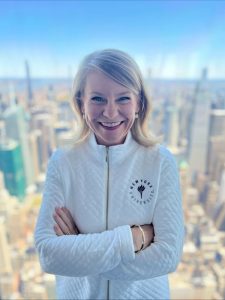 Earlier this month Prof Brydie-Leigh Bartleet returned from the U.S., where she has been a Fulbright Scholar at New York University (NYU) for the past three months. At NYU she worked with her host Prof Barbara Hesser on a program of research that builds on the Music as a Global Resource Compendium they produced for the UN’s 75th Anniversary, and enriches her current ARC Future Fellowship at the Creative Arts Research Institute Griffith University, The Creative Change Project, which focuses on the role that music can play in addressing entrenched social inequalities… read more.
Earlier this month Prof Brydie-Leigh Bartleet returned from the U.S., where she has been a Fulbright Scholar at New York University (NYU) for the past three months. At NYU she worked with her host Prof Barbara Hesser on a program of research that builds on the Music as a Global Resource Compendium they produced for the UN’s 75th Anniversary, and enriches her current ARC Future Fellowship at the Creative Arts Research Institute Griffith University, The Creative Change Project, which focuses on the role that music can play in addressing entrenched social inequalities… read more.
My Fulbright Experience: The Chance of a Lifetime
By Fulbright Alumna Vinita Godinho (awarded 2019)

It’s not often that you come across people whose professional careers have seen them transition between sectors. In my case, having switched hats from banking to academia and then to the community sector, I was pleasantly surprised to meet others with similar career trajectories as part of the Fulbright Program. The Fulbright Program is a unique opportunity which connects researchers and practitioners in Australia with like-minded professionals in the United States (US), to foster longer-term collaboration and exchange of ideas between the two countries. Awarded a Professional Coral Sea Scholarship, I spent three months (August to November 2019) in the US, learning more about how to improve financial wellbeing for vulnerable groups at the Center for Financial Inclusion in Washington DC… read more.
Two Summers: A Canberra Experience
By Fulbright Alumnus Ray Taras (awarded 2019)
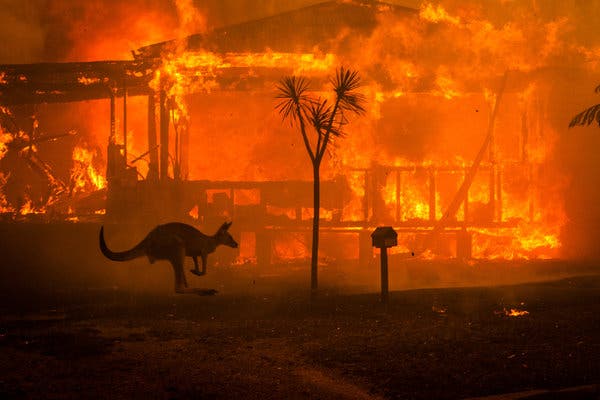
When I arrived in Canberra in mid-January 2019, the temperature had risen to over 40 Celsius, or 104 Fahrenheit. For the next week I stayed bunkered down in my apartment on the ANU campus swigging Melbourne bitter. I hadn’t yet discovered the joys of the Fellows’ Bar across the road. But this year has changed everything about the Bush Capital—and Australia. In hindsight I realize how fortunate I was to face just very high temperatures. From September 2019, out-of-control bushfires broke out in all Australian states. In New South Wales and Victoria, life-threatening fires reached the coast where evacuees had been cut off. The military were called in to help. It’s impossible to estimate how much fauna, flora and trees have been obliterated… read more.
Let Me Count the Ways
By Fulbright Alumna Gayle Maloney (awarded 2015)
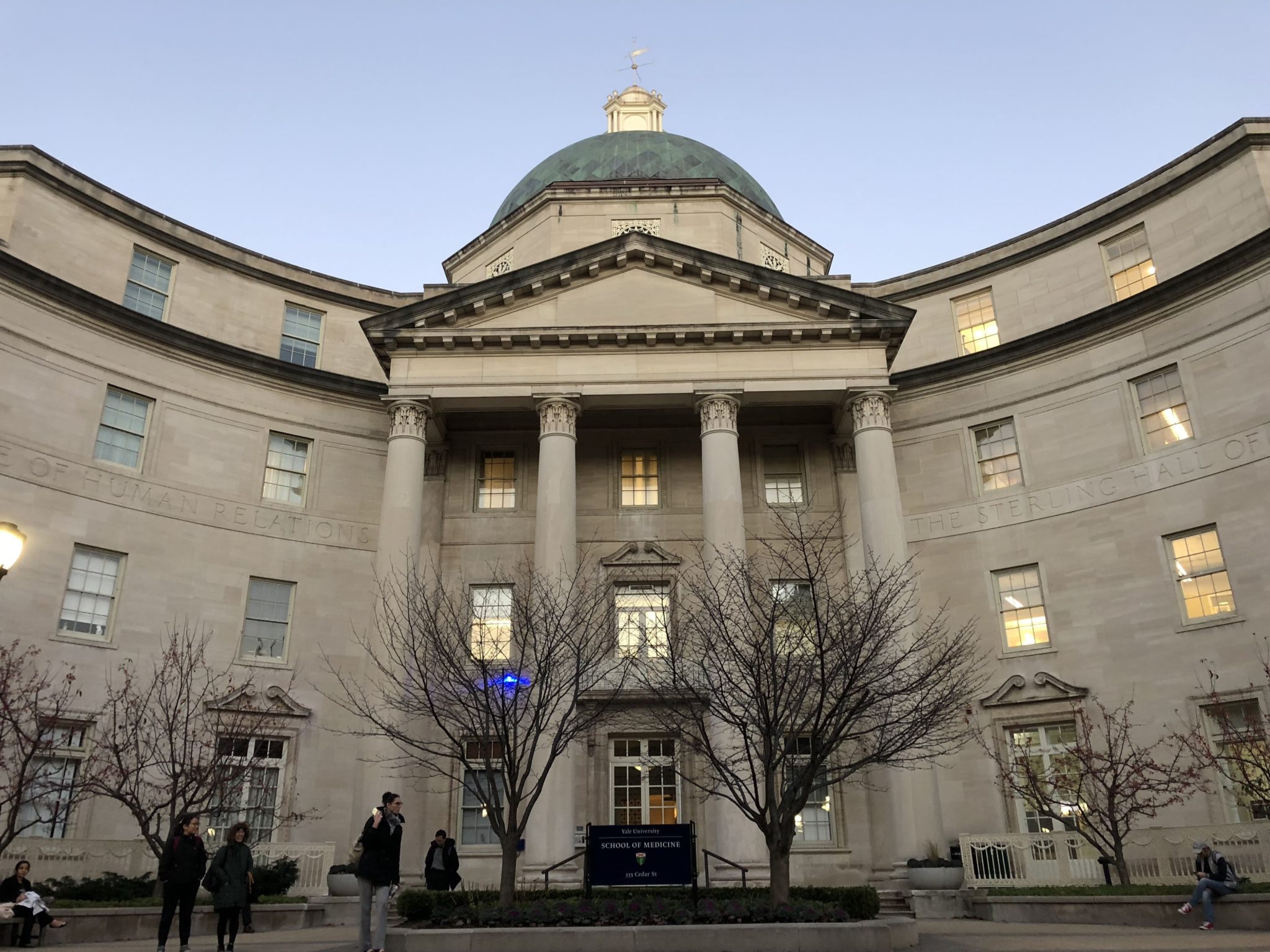
Like several other Fulbright Alumni, I credit Paul Simon with my first awareness of the word ‘Fulbright’, courtesy of the lyrics to his song “I know what I know”, which was released when I was all of nine years old! It wasn’t until decades later, however, that my interest in the Fulbright program grew, upon that early seed. My Fulbright application essentially reflected my personal wish list of what an ideal program would look like to suit my professional development needs at that mid-stage point of my career. This program included working predominantly with world-renowned researchers in the field of Obsessive-Compulsive Disorder (OCD), as well as having the opportunity to attend advanced specialised training courses from dedicated OCD organisations that were not available in Australia. The Fulbright name is so well regarded in both international academic and professional communities that I have no doubt as to how beneficial it was in securing an incredible offer to work as a visiting research scholar at Yale University School of Medicine… read more.
The Gift that Keeps On Giving
By Fulbright Alumnus Robert Condon (awarded 1980)
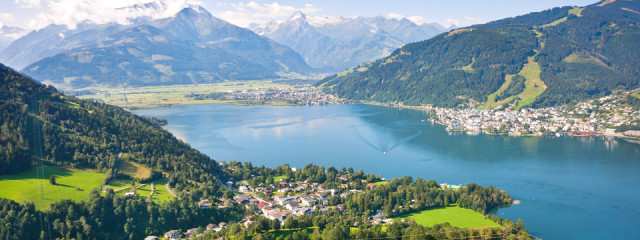
Walking back to my hotel after a State Department reception for recently arrived Fulbright Scholars, I realised I was lost. I was well rugged up and wearing a Robin Hood hat trying to block the wind chill from the Potomac. Suddenly three lanky youths lurched out of a doorway. One snatched at my hat shouting ‘I want that hat.’ Ducking, I said ‘Don’t think so. Wouldn’t fit you.’ One said: ‘Hey where you from?’ ‘Australia.’ ‘Hey, you an Aussie? What about the kangaroos,’ and we all began to laugh? After a lengthy conversation on the peculiarities of the kangaroo they directed me back to Dupont Circle… read more.
From Bee Suit and Microscope to White Coat and Stethoscope
By Fulbright Alumnus Brian Entler (awarded 2016)

As a young professional, it is impossible for me to imagine where my life might be without having received the Fulbright Scholarship. My first application, during the 2013-2014 cycle, was as an undergraduate at the University of Scranton. At the time, I was working with Dr. Seid as a member of his neuroethology lab. Of the three most impactful moments in my career thus far, meeting Dr. Seid was the first. The second, during the summer of 2012, was when he introduced me to Dr. Andrew Barron… read more.
My Eastern-Western Fulbright Adventure
By Fulbright Alumna Angela Heise (awarded 1986)
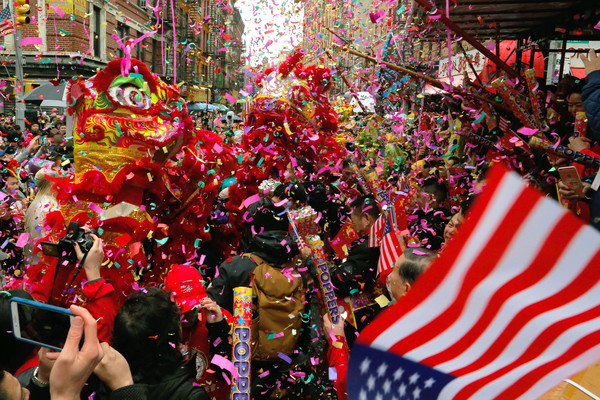
It was 1982 when I started studying American History and Sinology at Hamburg University. How did I end up with this particular combination, you may ask? At the time, psychology mostly dealt with mental illness, rats and statistics, so to me, studying a very different culture and the melting pot of American society seemed to be the best way to learn about why people created misery for everyone directly or indirectly involved by fighting themselves and each other. I wanted to understand why people kept doing things they knew would make them unhappy and find out what would create happiness instead. For the next four years I immersed myself in German-American, Irish-American, Chinese and Chinese-American history, learned about international relations before and after the two world wars, and explored how American history was shaped by immigrants… read more.
All Roads Lead to Chicago
By Fulbright Alumnus Tim Mehigan (awarded 2017)
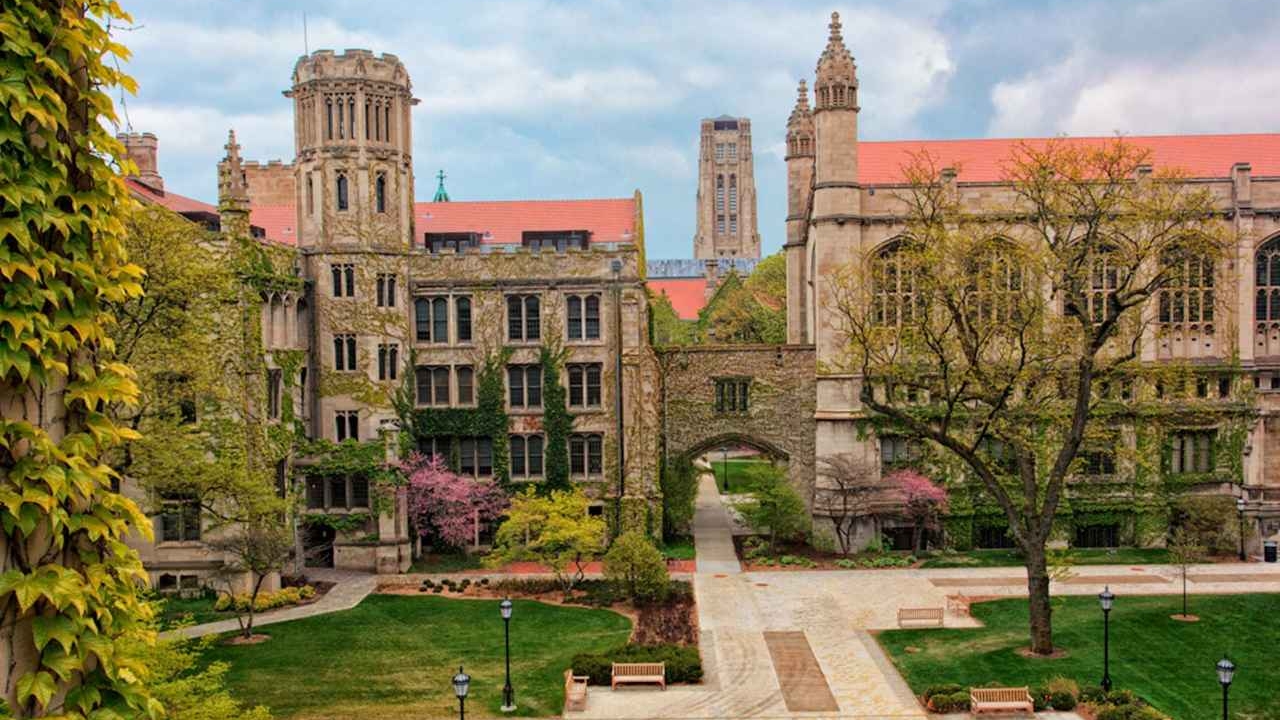
Somewhere between 1999 and 2011 the road to Chicago became irresistible. 1999 was the year I read a book by the South African writer J.M. Coetzee called Disgrace. It’s the sort of book, once you encounter it, which never leaves you. Kafka said that writing was like an axe breaking through a frozen sea. Disgrace was this kind of book. It left part of me in shards and splinters, part of me exhilarated. Then I read other books by Coetzee. Bit by bit I noticed that Coetzee was breaking frozen seas everywhere, but he was doing so with special tools and in particular accents. To a scholar trained in German literature and thought and already mid-way through a career in literary studies, many of these accents seemed quite familiar. I resolved to turn my interests toward Coetzee’s work in a deeper way. Maybe I could contribute something. I completed my first research project on Coetzee in 2011… read more.
“Manhappiness” in the “Little Apple”
By Fulbright Alumnus Ralf Dietzgen (awarded 2016)

I had never heard the term ‘Manhappiness’ before coming to Manhattan, Kansas, the ‘Little Apple’. As I learned while living in this wonderful town near the Tallgrass Prairie and home of the Wildcats, this term reflects the state of being in Manhattan – everyone in this town was always super friendly, helpful to others and kind, leading to a feeling of happiness and wellbeing all around. I was awarded a Fulbright Senior Fellowship that was sponsored by Kansas State University (KSU), a famous agricultural school roughly in the centre of the United States. I went there to learn from and collaborate with my colleagues, Professors Dorith Rotenberg and Anna Whitfield who are at the forefront of scientific research on the molecular interactions of plant viruses and their thrips vectors. Thrips are tiny insects, only a few millimetres long as adults, that transmit tospoviruses, named after the best-known member tomato spotted wilt virus. Once infected with these plant viruses, the viruses multiply in the insect and can be passed on to new plants when thrips feed. I worked closely with a PhD student and postdoctoral researcher to compare genetic data and learned how to pull ultra-thin capillaries to micro-inject thrips to try and specifically knock-down some of their essential genes for future insect control… read more.
Stuck in the Mud
By Fulbright Alumna Stacy Jupiter (awarded 2002)

I spend a lot of time in the mud. As a child with dreams of becoming a marine biologist and spending my days exploring coral reefs in clear tropical seas, I never thought that mud was my future. After I finished my undergraduate degree (at Harvard University, A.B. 1997), I entered the U.S. Peace Corps, where I lived for two years in rural Gabon, central Africa, working with farmers to build tilapia ponds and integrate them with sustainable agriculture. It was dirty work. I would bicycle sometimes upwards of 40 kilometres a day over a red clay road that turned to goo in a sudden downpour, walk sometimes several hours through slippery rainforest paths to get to my farmers’ plantation sites, and then dig, dig, dig and pound, pound, pound to construct tilapia ponds carved out of the earth by hand… read more.
My Harvard Fulbright Journey
By Fulbright Alumna Jessa Rogers (awarded 2017)

As an Aboriginal PhD scholar, I had considered applying for an Indigenous scholarship to complete some of my studies internationally, but never really considered any mainstream opportunities. In 2017 at the last minute, I decided to gather the courage to apply for my first mainstream scholarship with Fulbright. Little did I know that a short while later I would be completing my PhD as a Fellow at Harvard University, an institution that needs no description. My time as a Harvard Fellow taught me so much about the Harvard community – one that is embracing, small enough to feel like ‘home’ and with a long history related to Native American peoples (a few years after its founding in 1636, Harvard University established their ‘Indian College’ specifically for the education of Native American peoples, complete with a 20-student boarding facility built on Harvard Yard). From these early origins Harvard, today (like many institutions) is working hard to grow its small number of Native faculty, and has a successful Native student program, HUNAP, to support Native success at Harvard… read more.
The Email that Changed my Life
By Fulbright Alumnus Iain Butterworth (awarded 2003)
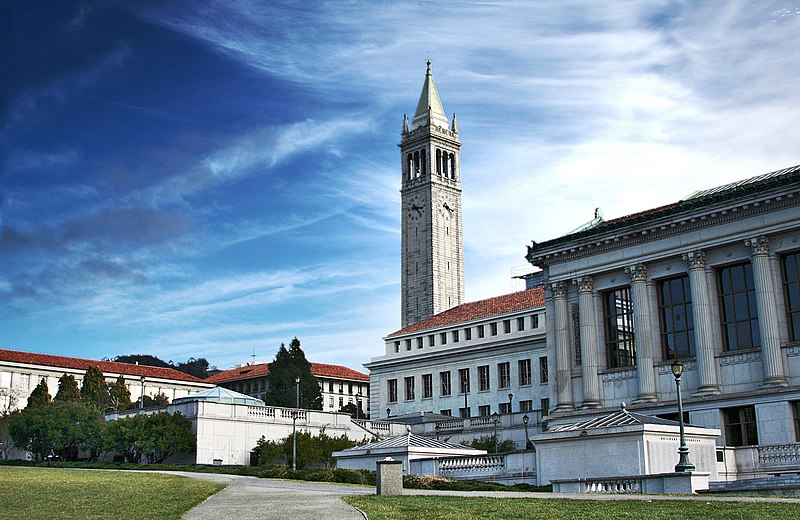
In 2003-4, I was a Fulbright Visiting Scholar at the University of California at Berkeley. This experience changed my whole life. My story is about the importance of contacting the people who inspire you. You never know where it may lead. In 2000, I received my PhD in community psychology. My research investigated environmental adult education. In part, I explored the way that urban development affects people’s sense of belonging and quality of life. Later that year, I joined the Public Health Division at the Victorian Department of Human Services. My Local Government Partnerships Team supported local Councils’ municipal public health planning efforts… read more.
The Winds of Change in Texas
By Fulbright Alumnus Cameron O’Reilly (awarded 2008)
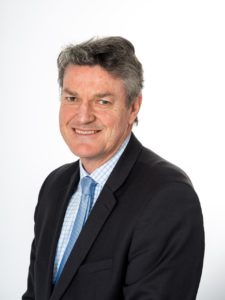 In 2008 I was fortunate enough while Chief Executive of the Energy Retailers Association of Australia (ERAA) to receive the Fulbright Professional Scholarship in Australia-US Alliance studies. My project was a comparative study on the impact of emissions reduction policies on the energy generation sectors in the US and Australia. At the time there was more likelihood of carbon pricing legislation in both countries, with Australia debating the Rudd Government’s Carbon Pollution Reduction Scheme (CPRS) and the US Congress considering the Waxman-Markey “cap and trade” legislation which was introduced in 2009, the first year of the Obama Administration.
In 2008 I was fortunate enough while Chief Executive of the Energy Retailers Association of Australia (ERAA) to receive the Fulbright Professional Scholarship in Australia-US Alliance studies. My project was a comparative study on the impact of emissions reduction policies on the energy generation sectors in the US and Australia. At the time there was more likelihood of carbon pricing legislation in both countries, with Australia debating the Rudd Government’s Carbon Pollution Reduction Scheme (CPRS) and the US Congress considering the Waxman-Markey “cap and trade” legislation which was introduced in 2009, the first year of the Obama Administration.
I chose as my base the Center for International Energy and Environmental Policy at the University of Texas at Austin (UT). Texas as an electricity market has a similar design to Australia’s National Electricity Market (NEM), a hot climate and a fossil fuel intensive energy sector. Moreover, the vast majority of the Texas population, which is around the same size as Australia’s, live in houses and in major urban concentrations around Houston, Dallas, San Antonio and my chosen base of Austin. Many parts of the state, notably the west, are desert like and only lightly populated.
True to their proud independent nature, unlike a lot of US states, Texas has few points of interconnection to its neighbours despite having the highest electricity demand of any state in the Union. Many people I got to know in the industry and academia only half-jokingly said this was because Texas could one day secede from the Union and revert to being a republic, as it had been in the mid-nineteenth century. A t-shirt I saw on campus at UT had a picture of the then Governor Rick Perry, now US Energy Secretary, with the satirical caption “most likely to secede”.
That was typical of the irreverent humour in Austin, which being the State capital and a university town, was viewed with some suspicion by other Texans as a den of liberal views. The fact that it was home to a major rock music festival, South by Southwest, only added to its bohemian reputation. For me that was a bonus as my time in Austin from February to June, 2009 overlapped with the music festival. Yet I found that in Austin, live music was a constant throughout the year consistent with its reputation as the “live music capital of America”.
I was also fortunate in that my timing coincided with the sitting of the Texas Congress, which only meets biannually for one hundred and forty days. If legislation is not passed within that time it automatically lapses. Such a short sitting period seemed to me to be a terrible under-utilisation of the imposing Texas Congress building in Austin, which I was told was higher than Capitol Hill in Washington. Everything has to be bigger in Texas while having their politicians time limited was viewed by some Texans as a good way to avoid big-government and over-regulation.
It seemed somewhat counter intuitive that the legislature of Texas, in 2005, had implemented one of the most beneficial pieces of legislation to the renewable energy industry with the creation of the Texas Competitive Renewable Energy Zones (CREZs). The legislation required the regulator and market operator to find a way to build vast transmission lines from the west of the State, where a nascent wind industry was developing, to the major cities in central Texas. The wind industry had benefitted from earlier legislation in 1999 that created a renewable portfolio standard under then Governor, George W Bush.
The west of Texas has high quality wind resource from the desert and Gulf of Mexico and ranchers were happy for their farms to co-exist with the turbines and receive a new income stream. With local acceptance and a commitment to making use of “their wind”, the Texas market operator launched an expression of interest process which allowed consortiums to bid for the right to build the vast transmission lines from the renewable energy zones to where energy was used in the cities. Thanks mainly to this willingness to invest in necessary transmission infrastructure, Texas today has the highest level of installed wind power in the US with around 25,000 megawatts. In capacity that is more than half of the generation in the NEM.
Complemented by a massive expansion of gas development in the state, the combination of wind energy and fast start gas generators has seen coal generation in Texas displaced and overall emissions from the generation sector decline. Ask many Texans if they support emissions reduction legislation and you can expect a short response. Ask them if they support industry development legislation in Texas and you’ll get a different answer. In the end whatever the motivation, the wind industry has boomed in the Lone Star State.
Ten years later I find myself as a government official in the state of NSW discussing the challenges outlined in a long-term Integrated System Plan (ISP) from our market body, the Australian Energy Market Operator (AEMO), which foreshadows the market driven closure of coal generators in the State and their replacement by a portfolio of renewables and fast start generators in areas presently without adequate transmission capacity.
Energy is an industry where universal principles operate within vastly different climates, resource bases and legal and regulatory systems. No two circumstances are ever the same. Nevertheless, when searching for precedents for the transition our State and the NEM are facing, Texas inevitably comes up in discussion. A place that for many is the home of the global fossil fuel industry, provides one of the best-case studies for the development of renewable energy zones which AEMO say will be needed across Australia in coming decades.
In an intellectual sense, it reminds me that pre-conceptions can frequently disproved by reality. In a personal sense, it reminds me of the enduring benefits and privilege of being a Fulbright Professional Scholar.
Want to share your Fulbright story too? Let us know by clicking here.
Collective Interactions
By Fulbright Alumnus David Huang (awarded 1998)
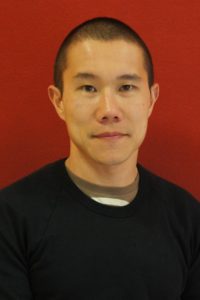 Over 21 years ago I boarded a flight in Sydney bound for San Francisco to begin my Fulbright journey, a journey that has had an immeasurable impact on my life and career.
Over 21 years ago I boarded a flight in Sydney bound for San Francisco to begin my Fulbright journey, a journey that has had an immeasurable impact on my life and career.
It was more than a little surreal to think that I would soon be starting a PhD as a Fulbright Scholar at the University of California, Berkeley, an institution that had produced some of the greatest scientific discoveries of the twentieth century and had enough Nobel Laureates on staff to justify reserved parking spaces on campus for prize-winners. On top of that, my advisor-to-be had literally written THE book on my PhD topic. Needless to say, it was with a sense of excitement tinged with apprehension that I approached this new chapter of my life.
The seeds of my idea to undertake my PhD studies in the United States were sown during the Honours year of my Bachelor of Science degree at the University of Sydney. My Honours research in physical chemistry had led me to the fundamental question of how chemical reactions occur in liquids. Molecules are densely packed in liquids and so chemical reactions often involve the simultaneous interaction of many molecules: keeping track of each molecule is impossible, so the only feasible way to describe chemical reactivity is to treat the collective behaviour of molecules in liquids statistically.
Trying to tackle this problem brought me to the field of statistical mechanics, the area of physics concerned with understanding physical systems using statistical methods, and to seminal papers on the subject that seemed to be largely written by American researchers. I quickly realised that, to be at the centre of groundbreaking research in this area, I would have to pursue a PhD in the United States. The next logical step was to apply for a Fulbright scholarship, the most widely recognised award for international students in the US. It still amazes me that my application was successful.
 Studying in the US as a Fulbright Scholar gave me the chance to meet and work with some of the brightest and most interesting people in my field. My perspective on science and approach to research has been indelibly influenced by this experience. The Fulbright program also created many other unique opportunities during this time: I was able to visit research collaborators across the country at the University of Rochester in New York through a Fulbright-funded professional enhancement grant; I got to meet and make friends with other Australian Fulbrighters from a range of disciplines and to meet senior Department of State and Australian Embassy staff during a visit to Washington DC; and I attended numerous social and cultural events in the San Francisco Bay Area with Fulbrighters from around the globe. Fulbright exposed me to cultures and perspectives that I would not have encountered otherwise. My only regret is that I didn’t take greater advantage of all of the opportunities that the Fulbright program had to offer.
Studying in the US as a Fulbright Scholar gave me the chance to meet and work with some of the brightest and most interesting people in my field. My perspective on science and approach to research has been indelibly influenced by this experience. The Fulbright program also created many other unique opportunities during this time: I was able to visit research collaborators across the country at the University of Rochester in New York through a Fulbright-funded professional enhancement grant; I got to meet and make friends with other Australian Fulbrighters from a range of disciplines and to meet senior Department of State and Australian Embassy staff during a visit to Washington DC; and I attended numerous social and cultural events in the San Francisco Bay Area with Fulbrighters from around the globe. Fulbright exposed me to cultures and perspectives that I would not have encountered otherwise. My only regret is that I didn’t take greater advantage of all of the opportunities that the Fulbright program had to offer.
Although it has been 21 years since I was a Fulbright Scholar, my Fulbright experience continues to influence my career: just two years ago, I had the chance to undertake a six-month research sabbatical with a colleague at Harvard University whom I met as a Fulbrighter in Berkeley. I look forward to the future opportunities and experiences that the Fulbright will no doubt bring.
Want to share your Fulbright story too? Let us know by clicking here.
Olympic Games, Opioid Research and Hospital Music
By Fulbright Alumnus Shahrdad Lotfipour (awarded 2000)
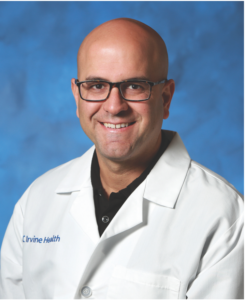 Thinking back to 20 years ago, I was entering my last year of undergraduate studies at the University of California, Irvine (UCI). I was moving forward on a project that would bring drama exercises to the pediatric ward. The project was part of a psychosocial pain therapy approach that helped children distract their attention from the fact that they were in the hospital setting. In parallel, I was realizing that I needed a deeper understanding of the mechanisms mediating pain relief. I heard about the United States Fulbright fellowship program through our UCI scholarship office and was encouraged to apply. The benefit of the Fulbright was the opportunity to train in almost any country in the world. The primary question was which country I would choose. The answer came from my interests in attending the Olympic games for Track & Field, scheduled for Sydney, Australia, in the year 2000. Although my race times in Division I athletics at UCI would not allow me to qualify, the interest to go to Australia remained. Fortunately, I could choose to use academics versus athletics to accomplish the goal.
Thinking back to 20 years ago, I was entering my last year of undergraduate studies at the University of California, Irvine (UCI). I was moving forward on a project that would bring drama exercises to the pediatric ward. The project was part of a psychosocial pain therapy approach that helped children distract their attention from the fact that they were in the hospital setting. In parallel, I was realizing that I needed a deeper understanding of the mechanisms mediating pain relief. I heard about the United States Fulbright fellowship program through our UCI scholarship office and was encouraged to apply. The benefit of the Fulbright was the opportunity to train in almost any country in the world. The primary question was which country I would choose. The answer came from my interests in attending the Olympic games for Track & Field, scheduled for Sydney, Australia, in the year 2000. Although my race times in Division I athletics at UCI would not allow me to qualify, the interest to go to Australia remained. Fortunately, I could choose to use academics versus athletics to accomplish the goal.
I started looking into pain researcher programs within Australian Institutions. I found the University of Queensland (UQ), School of Pharmacy, in Brisbane, Australia, and a researcher I was particularly interested in working with. The work focused on studying the role of opioids in neuropathic and cancer pain. Given the relevance of the topic to my own interests, I gained the sponsorship of my advisor for the Fulbright fellowship. With the support, I was awarded the one-year fellowship and was able to simultaneously complete a Masters in Medical Science degree at UQ.
While doing research at UQ, I soon realized the beneficial relief, yet long-term devastation, that opioids could have on the brain and body, particularly as it related to drug addiction. I became fascinated by the neurobiology of addiction and pursued a Ph.D. at UCI focused on the mechanisms and therapeutic interventions that could help with treatment. This eventually led me to pursue two post-doctoral fellowships. The first was at the University of Nottingham in the United Kingdom, on the developmental effects of drugs of abuse on the adolescent brain and body, as part of the Brain & Body Center. The second was at the University of California Los Angeles (UCLA), on the molecular mechanisms mediating drugs of abuse. At UCLA, I worked at the Shirley and Stefan Hatos Center for Neuropharmacology continuing my research studies on addictive drugs, including opioids and nicotine. This led to a tenure track faculty position at UCI, where I currently reside with my wife and family. My research studies at UCI continue to focus on the mechanisms and therapeutic interventions of drugs of abuse.
I have no doubt that my Fulbright fellowship was one of the early instrumental life events that impacted the rest of my career. While I was in Australia on my Fulbright fellowship, I continued my interests in integrating the arts and medicine. I volunteered at the Royal Brisbane Children’s Hospital, where I witnessed a children’s broadcasting studio used in the hospital setting. The program allowed children to be guest video DJ’s in an in-house hospital television network. The children could request their own music videos to be played throughout the hospital, which assisted them in getting their minds off of the fact that they were in the hospital. I was so moved by the concept that I helped initiate the same idea at the UCI Children’s Hospital during my Ph.D. studies. After the UCI Children’s Hospital’s merger with the Children’s Hospital of Orange County (CHOC), it is wonderful to know that a Ryan Seacrest Studio’s and Foundation is focusing on similar goals. I should also mention that the goal of attending the Sydney Olympic games came true. I attended the qualification track meets leading up to the games as well as the Sydney Olympic games themselves. Obviously, I did not get to run on the track during the races, but took time to reflect on the remarkable journey that brought me to the Sydney Games.
I am grateful for what the Fulbright experience has provided. This includes wonderful mentors and colleagues across the world, with interests in advancing mutual understanding through educational exchange. I have no doubt that my Fulbright experience was worth undertaking. I hope the above examples provide a glimpse of some reasons why.
Importantly, while the Fulbright program can be applied to academic life at varying time-points throughout a career, I would highly recommend it to anyone considering the opportunity, particularly to undergraduate students who are a year away from graduating. This includes undergraduate students from other countries thinking of studying in the United States or vice versa. Either way, the program allows one to explore distant lands and experience adventures that advance one’s career. Further, though alumni chapters and outreach initiatives, including for example, TEDxFulbright, the program will continue to give back to you for a lifetime. I will never forget the many memories that the Fulbright program has provided me over the years and am forever thankful for those who made the experience possible, including my mentors/advisors and the Australian-American Fulbright Commission.
Want to share your Fulbright story too? Let us know by clicking here.
The Greatest, Most Positive Experience of My Life
By Fulbright Alumnus Paul Chang (awarded 1989)
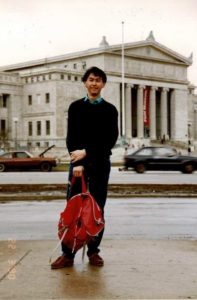 I’ll give you the punchline to my alumni story right at the very beginning. Being a Fulbrighter has been the greatest, most positive experience of my life, on so many levels. On a personal level, the joy of finding out that I was awarded a scholarship was exhilarating, and gives me goosebumps thinking about it to this very day, despite the many years in between. Another highlight was the first time I met other Fulbrighters at a Fulbright conference in Chicago, not long after I had arrived. I remember thinking that, wow, here I was, with all of these interesting people from diverse backgrounds, but all with something fantastic in common! We all got on like a house on fire, and I felt humbled being in their presence. I still have that feeling, whenever I have the opportunity to get together at alumni functions back in Perth, or on occasion, in Canberra. To know that despite our individual circumstances, we all had the experience of living and working in the United States means that you are inextricably tied to the movement and the philosophy of Fulbright. I know that this experience gives us a lifetime of professional benefits, given the vast network we all belong to.
I’ll give you the punchline to my alumni story right at the very beginning. Being a Fulbrighter has been the greatest, most positive experience of my life, on so many levels. On a personal level, the joy of finding out that I was awarded a scholarship was exhilarating, and gives me goosebumps thinking about it to this very day, despite the many years in between. Another highlight was the first time I met other Fulbrighters at a Fulbright conference in Chicago, not long after I had arrived. I remember thinking that, wow, here I was, with all of these interesting people from diverse backgrounds, but all with something fantastic in common! We all got on like a house on fire, and I felt humbled being in their presence. I still have that feeling, whenever I have the opportunity to get together at alumni functions back in Perth, or on occasion, in Canberra. To know that despite our individual circumstances, we all had the experience of living and working in the United States means that you are inextricably tied to the movement and the philosophy of Fulbright. I know that this experience gives us a lifetime of professional benefits, given the vast network we all belong to.
Now, as a psychologist, I’m prone to theorizing about behaviour, so I can describe the Fulbright in formal terms. To me, it is clear that the Fulbright experience is the embodiment of what we psychologists call a shared psychological sense of community. We talk about the feeling that our shared experiences helps bind us to each other, and that as a group, we have a shared faith that our needs will be met through a commitment to each other and to the Fulbright cause. This is important, because in a practical sense, it contributes to positive mental health while emphasising our individual perceptions, attitudes, and feelings about belonging to this community. We are bound by our similarities in terms of our Fulbright experience, and the feeling that we are part of a larger, dependable and stable structure.
As an aside, something that isn’t mentioned too often in Fulbright alumni stories are stories that include a partner or spouse who are also an integral part of the movement. I’ve always been grateful that I went on my Fulbright experience with my wife Monika, who worked at high intensity nursing positions in Minneapolis and Chicago. These nursing experiences she experienced at the forefront of how nursing care was applied to dialysis patients and the technology that she saw predated some of the changes that occurred in Australia when we came back from our Fulbright experience.
With my wife Monika, we had some tough winters to contend with in Minneapolis and Chicago, but the warmth of the American people and their willingness to share their experiences with us more than made up for many chilly mornings and evenings. I like to say that I was raised in Western Australia, but I really grew up in Chicago, a tough-as-nails, no nonsense city. So, yes, I can thank the Fulbright experience for helping me to finally grow up!
Want to share your Fulbright story too? Let us know by clicking here.
Adventure in the Northern Territory
By Fulbright Alumna Katherine Lacksen (awarded 2013)
 When I think back to the start of my Fulbright journey, I see myself sitting across from my undergraduate research professor and mentor, Dr. James Porter, in his office in the back corner of the Ecology building at the University of Georgia. It is a familiar scene, I had spent many hours in that office the previous year pouring over data for a Florida Keys coral reef mapping project. Yet on that particular afternoon, a hot, humid Georgia day, we were not there to talk about coral pathogens or human wastewater runoff. Dr. Porter wanted to discuss my post-graduation plans for the coming year. Having participated in a study abroad trip to Australia the previous year, I was keen to get back to Australia, but certainly did not have a clear direction or path forward. I remember that afternoon in great detail because it was during this meeting that Dr. Porter asked if I was familiar with the Fulbright program (I was not), and he suggested that I apply for a scholarship in the fall.
When I think back to the start of my Fulbright journey, I see myself sitting across from my undergraduate research professor and mentor, Dr. James Porter, in his office in the back corner of the Ecology building at the University of Georgia. It is a familiar scene, I had spent many hours in that office the previous year pouring over data for a Florida Keys coral reef mapping project. Yet on that particular afternoon, a hot, humid Georgia day, we were not there to talk about coral pathogens or human wastewater runoff. Dr. Porter wanted to discuss my post-graduation plans for the coming year. Having participated in a study abroad trip to Australia the previous year, I was keen to get back to Australia, but certainly did not have a clear direction or path forward. I remember that afternoon in great detail because it was during this meeting that Dr. Porter asked if I was familiar with the Fulbright program (I was not), and he suggested that I apply for a scholarship in the fall.
This meeting led way to a phase of in-depth research about the Fulbright program, and ultimately to applying several months later. Being selected was certainly a long shot that every statistic about acceptance rate and competitiveness reconfirmed, but the more I read about the Fulbright, the more excited I was to take the risk and apply for a chance for a scholarship driven by discovery, education, and cultural exchange. Just five weeks prior to my final exams and graduation ceremony, I received the email notifying me of my selection! Later that summer, I boarded a plane in Atlanta, Georgia with a one-way ticket to Darwin, Australia and thus embarked on a journey that changed my life.
 I was extremely fortunate to connect with Professor Michael Douglas, a 2012 Fulbright Australian Scholar, who at that time was working at Charles Darwin University. I was drawn to his impressive work in freshwater ecology and management, but what stood out the most was his research focus on combining Indigenous knowledge and Western science. With his local connections and collaborative work with Traditional Owners across the Top End, we were able to develop a research project that focused on examining the movements of the native fish, Hephaestus fuliginosus, or sooty grunter, in the regional northern tropical rivers. By studying the otolith, or fish ear bone, we sought to understand the movement and history of the local fish and its importance as a food source in the Indigenous communities.
I was extremely fortunate to connect with Professor Michael Douglas, a 2012 Fulbright Australian Scholar, who at that time was working at Charles Darwin University. I was drawn to his impressive work in freshwater ecology and management, but what stood out the most was his research focus on combining Indigenous knowledge and Western science. With his local connections and collaborative work with Traditional Owners across the Top End, we were able to develop a research project that focused on examining the movements of the native fish, Hephaestus fuliginosus, or sooty grunter, in the regional northern tropical rivers. By studying the otolith, or fish ear bone, we sought to understand the movement and history of the local fish and its importance as a food source in the Indigenous communities.
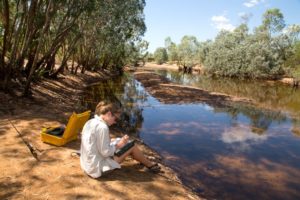 In order to do this, we had to catch the fish from a variety of locations across the different rivers so that we could then analyze the chemical composition of the otoliths and water samples in the lab. This proved to be no small feat with many areas becoming almost completely inaccessible during the phenomenal wet season. Secondly, there were the crocodiles to consider. These prehistoric creatures evoked the emotions of wonder and bone chilling fear, simultaneously. Finally, there was the inconvenient and proven fact that I was terrible at actually catching any sooty grunters!
In order to do this, we had to catch the fish from a variety of locations across the different rivers so that we could then analyze the chemical composition of the otoliths and water samples in the lab. This proved to be no small feat with many areas becoming almost completely inaccessible during the phenomenal wet season. Secondly, there were the crocodiles to consider. These prehistoric creatures evoked the emotions of wonder and bone chilling fear, simultaneously. Finally, there was the inconvenient and proven fact that I was terrible at actually catching any sooty grunters!
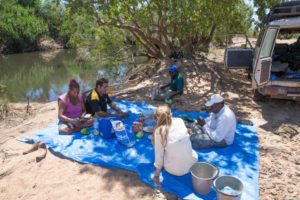 We worked closely with the Jawoyn rangers throughout the project, and thankfully, they caught sooty grunters left and right. During these fishing trips and the riverside lunches on the banks of the Fergusson River, they would share stories about country and talk about the issues facing their communities such as the implications that future dams or groundwater pumping could have on the freshwater ecosystems across the Northern Territory that they relied on for fish, such as the sooty grunter. These riverside conversations are some of my most treasured and sacred memories from my time in Australia.
We worked closely with the Jawoyn rangers throughout the project, and thankfully, they caught sooty grunters left and right. During these fishing trips and the riverside lunches on the banks of the Fergusson River, they would share stories about country and talk about the issues facing their communities such as the implications that future dams or groundwater pumping could have on the freshwater ecosystems across the Northern Territory that they relied on for fish, such as the sooty grunter. These riverside conversations are some of my most treasured and sacred memories from my time in Australia.
Perhaps Professor Douglas had a sneaky suspicion that I would need some help fishing, but I digress. This story, like many Fulbright stories, isn’t about “catching fish.” It’s about taking risks, seeking to understand before being understood, and open dialogue with the people we encounter as we explore the far-reaching corners of this beautiful world. With the utmost gratitude, respect, and humility, I am forever thankful to the Australian-American Fulbright Commission, Dr. Porter, Professor Michael Douglas and his team, and the Jawoyn people for the gift and opportunity they’ve given me to be a part of this Fulbright community and carry those lessons forward into the world.
Want to share your Fulbright story too? Let us know by clicking here.
Fulbright for Life
By Fulbright Alumnus Andrew Blyth (awarded 2012)
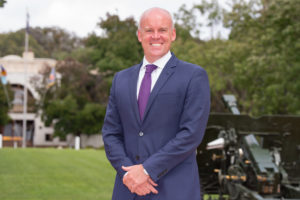 The phone call I received the morning I was awarded a Fulbright Scholarship is still fresh in my mind. To be bestowed such a prestigious award was immediately both affirming and daunting. Affirming, as my proposed research into off-grid energy solutions for the 1.5 billion global energy-poor was regarded important to Fulbright Australia; and, daunting, as people far more deserving than me have been conferred this esteemed honour in the past. It was my time to step up. The months before departing seemed to pass slowly despite the increased activity: visa applications, State Department briefings, booking flights and accommodation, interviewing house sitters, completing consultancy projects, and submitting a research paper for my master’s degree. By the end of July, I was more than ready to head off and start my academic journey in the United States.
The phone call I received the morning I was awarded a Fulbright Scholarship is still fresh in my mind. To be bestowed such a prestigious award was immediately both affirming and daunting. Affirming, as my proposed research into off-grid energy solutions for the 1.5 billion global energy-poor was regarded important to Fulbright Australia; and, daunting, as people far more deserving than me have been conferred this esteemed honour in the past. It was my time to step up. The months before departing seemed to pass slowly despite the increased activity: visa applications, State Department briefings, booking flights and accommodation, interviewing house sitters, completing consultancy projects, and submitting a research paper for my master’s degree. By the end of July, I was more than ready to head off and start my academic journey in the United States.
My first week as a Fulbright Visiting Fellow at the Center for International Energy and Environmental Policy, University of Texas at Austin did not go to plan. My supervisor (now good friend, Professor Michael Webber) informed me he was taking a sabbatical. Despite my initial disappointment I appreciated his kind gesture of reaching out to one of his colleagues to fill the void. By the time I made my way from one side of the ‘40 Acres’ campus to my new supervisor’s office on the other side he was packing his personal belongings. He had been instructed to take leave for failing to declare a financial interest in a fracking company while lead author of a fracking study. By lunch time, I was concerned for my research oversight but far from despondent. After a run my thinking was clearer, and my semester of research was planned. Actively seeking out mentors in the energy and business faculties, inviting myself to events, and engaging with postgraduate students was to be done at a cracking pace. I was determined to maximise my time as a Fulbright Scholar at UT; supervisor or no supervisor.
The fine weather in Austin allowed me to walk home most days from the University. Constantly churning over what I was researching and applying new thinking to an entrenched problem consumed me. Being greeted by my cheeky yet cheerful six-year-old twin daughters playing in the front yard most afternoons was even more rewarding. Enrolling Ava and Elisabeth in a local Elementary School was a smart decision. The girls had a wonderful time embracing a not so foreign culture while making new friends. Invitations to family homes and to national holiday celebrations came in plenty. There was no shortage of Texas barbeques, football games, parties, school events, and travelling. Listening to live music on a Sunday afternoon along Austin’s famous Sixth Street was also a treat. Exploring Dallas, Houston (Rice University) and San Antonio; and travelling interstate to California, Louisiana, Mississippi, New York, and Washington, D.C. added to our fond memories. (On a return visit to Austin in late 2016, I called on the girls’ kindergarten teachers. My heart burst with pride on seeing a picture of Elisabeth on her teacher’s classroom door. Ava was also remembered fondly by her kindergarten teacher. This warm response confirming it was worth the extra effort to include the girls in the adventure.)
Linking my research with the United Nation’s ‘Sustainable Energy for All’ (SEforALL) initiative was central to my scholarship application. Empowering leaders to broker partnerships and energising finance pathways to achieving universal access to sustainable energy was at the core of the global initiative. Securing an invitation to the media launch, official briefing and reception drinks at the UN’s headquarters overlooking the East River in New York allowed me to meet a range of influential people (UN staff, corporate leaders, government representatives, not-for-profit energy activists) instrumental in shaping my thinking. Discussing my preference for Christensen’s Disruptive Innovation Theory to potentially drive crowd funding for off-grid energy solutions was met with keen interest. Submitting my research paper promoting this idea a few months later was both rewarding and satisfying. Seeing my UNSW Master of Business testamur and Fulbright certificate on my kitchen table on arriving home capped off a productive twelve months.
Shortly after returning to Canberra, I welcomed the chance to chair the local Fulbright Alumni chapter. Meetings and social events including a Sunday lunch held at Poacher’s Pantry (30 minutes outside of Canberra) were well attended by past and current Scholars. My time as chair allowed me to show my gratitude for the life-enhancing gift awarded to me by the Fulbright selection committee. Sharing my experience with you is another.
In closing, demonstrating a potentially impactful research project, securing diverse references, and linking your research to an event or cause will go a long way to developing an application of note. Securing in-principle supervisor support from a senior academic at your host university is important to ensure oversight and to help you settle in quickly on arriving (if all goes to plan).
I am honoured to be a Fulbright for life.
Hook ‘em Horns!
Want to share your Fulbright story too? Let us know by clicking here.
Beyond Mathematics
By Fulbright Alumna Suzanne Buchta (awarded 1995)
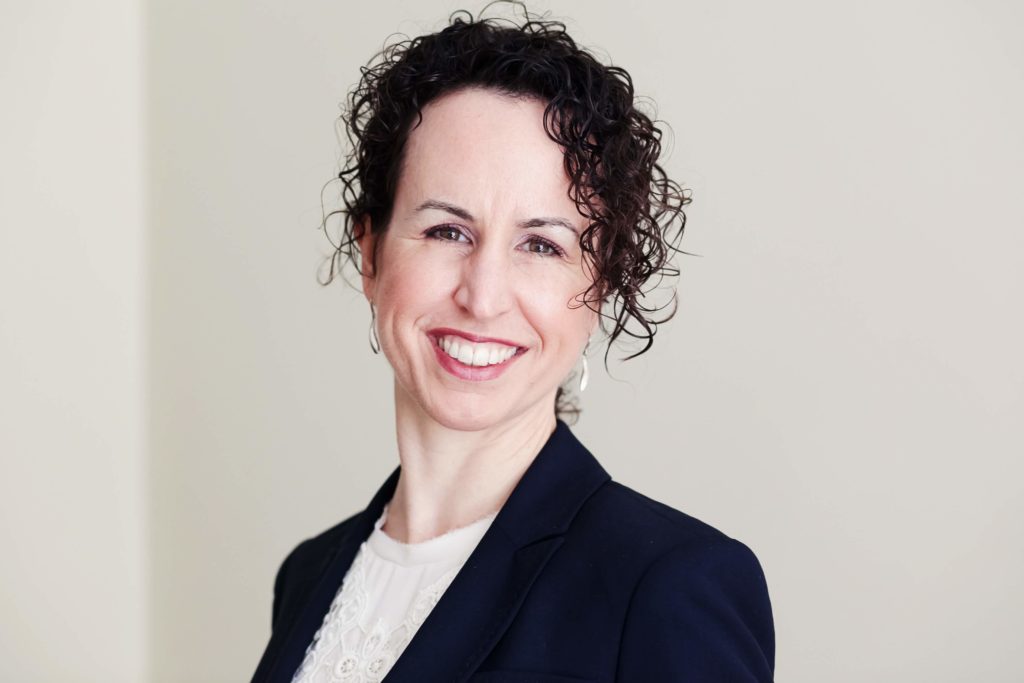
“Aren’t you the woman who was recently given a FuuuullllBRIGHT?” Though I was familiar with Paul Simon’s Graceland album from a young age, I was not at all familiar with the Fulbright Fellowship. I’m sure that for many years, I was naively substituting some embarrassingly incorrect lyrics for that line of “I Know What I Know.”
I first learned about the Fulbright Fellowship when a professor at College of the Holy Cross kindly approached me with encouragement and guidance on applying. Back then, my parents had made it clear that, as soon as college was over, I would be financially on my own. So I was beavering away, applying for PhD scholarships, jobs and fellowships, including the Fulbright. When they pulled me out of a final evening’s culmination festivities during a Spring Break week-long volunteering program, to take a phone call at a phone booth on the lamplit streets of Cape Charles, VA, to learn that I had been granted a spot on Australia’s Fulbright Fellowship list, I was still fairly ignorant about the cache associated with a Fulbright Fellowship. But I knew that I had just received very good news.
My understanding of the value of what I had just won grew, a slow crescendo over time. Not only did the public reference the Fulbright with some regularity, but, should my credential come to light, eyebrows raised in knowing appreciation and doors opened in acceptance. Eventually dawn lit over Marble Head and I realised just what lyrics Paul Simon was singing.
The Fulbright Fellowship accolade acted as a widely-accepted impartial arbiter, validating my ability. In the arenas of mathematics and finance, such an “objective” yard/meter-stick was welcome, especially as a woman. It helped me to put my heel over the threshold of the job that has both sustained me for the past 20 years (much to my parents’ delight) and enabled me to pay forward the value of my Fulbright Fellowship for the next lucky student. Do I still use the mathematics I researched during my Fellowship? No. But the Fulbright has provided me with other, more invaluable benefits.
Australia was my first time overseas. As anyone who has left the comfort of familiar surrounds knows, a year spent in a foreign land — immersed in different linguistic expressions, alternative cultural norms and varied perspectives — is transformative. The Fulbright teaches you to be an ambassador, bridging cultural gaps. This learned skill has come to my aid time and again throughout my personal and professional life, not least in running my current global environmental finance business for my employer.
The Fulbright also taught me the value of struggling academically. The Australian academic system, especially at the University of Melbourne, was much more rigorous than I had anticipated. To keep pace with my peers, I had to work harder than I had before. Being put in your place is a hard but valuable lesson and one better learned early. The Fulbright experience gave me that reckoning.
Finally, my year in Australia awakened my wanderlust. Travelling halfway around the world only piqued my curiosity to see more. In particular, I vowed to return not only to Australia, but also to New Zealand, where I met my now husband on a hiking trip. A professor in the UK, he moved me out of my comfort zone, yet again. Fortunately, much of the culture and lingo I learned during my Fulbright Fellowship year assists me now in my new UK home.
Was it worth it? You bet.
Want to share your Fulbright story too? Let us know by clicking here.
Into the Insect Mind
By Fulbright Alumnus Andrew Barron (awarded 2001)
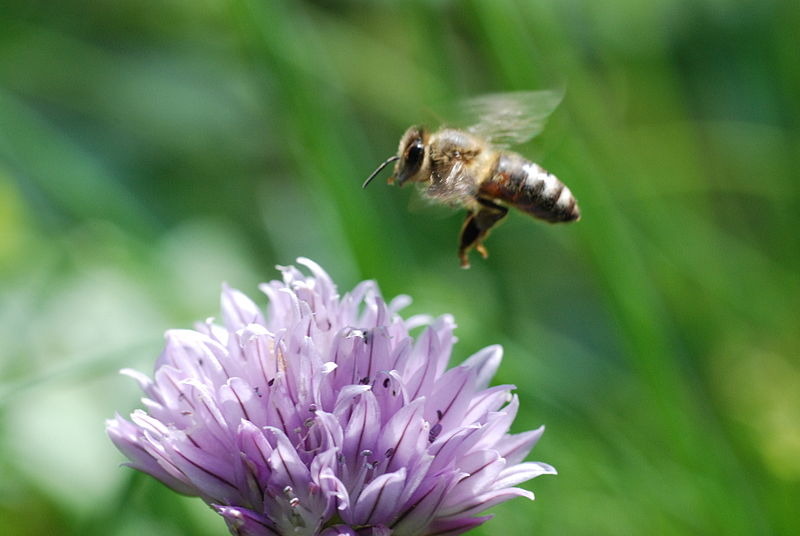
I’m dictating a first draft of this article wearing dark glasses sitting cross legged and hunched over a bumble bee colony in a small windowless room that is dazzlingly lit by banks of ultra violet fluorescent bulbs. I’m dictating rather than typing because I can’t take my eyes or (much of) my attention off the bumble bee I’ve trained in a simple logic test. The room is to give my bumble bees a place where their colony can be kept warm and well fed and where they are not distracted. All the lights are to bring the light level inside up to full noon daylight level and spectrum. It’s not an especially demanding test for my bee today: all she has to do is learn how the symbols on the outside of the puzzle box I’ve trained her to fly into relate to where sugar water is hidden inside the puzzle box. It wouldn’t take a human adult or child long to figure out, and I’m pleased to see it’s not taking her too long either. I set her trial after trial of the test. She’s so motivated to gather the sugar water she comes back so quickly to try it again she is usually back before I’ve had time to fully reset the test. I’m timing her and taking notes and videoing her in 3-D so afterwards I can analyse how she sets about solving a task like this… read more.
Fulbright Opens Amazing Doors
By Fulbright Alumnus Alex Frino (awarded 2005)
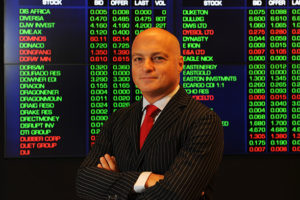 Being awarded a Fulbright Scholarship to study in the US in 2005 was a big deal for me – but just how big I couldn’t have imagined when I first applied.
Being awarded a Fulbright Scholarship to study in the US in 2005 was a big deal for me – but just how big I couldn’t have imagined when I first applied.
I must admit I didn’t give myself much of a chance at gaining such a prestigious scholarship, but I put everything I could into my application and really “shot for the stars”.
At the time I was chair of the School of Finance at the University of Sydney in my native Australia, with a strong research interest in stock market trading.
So I applied to Georgetown University and the US Commodity Futures Trading Commission, both based in Washington DC, asking them to host me for my Fulbright year should I be fortunate enough to succeed with my application. Georgetown had (and still has) one of the strongest finance research groups in the world, with a speciality in market micro-structure. The Commission is an independent agency of the US government created in 1974 to regulate futures and options markets to eliminate fraudulent trading activity.
Obviously if I could link up with those two organisations, I was going to be at the epicentre of research in the world’s largest finance and market sector.
Fortunately Professor Jim Angel from Georgetown and the Commission’s Chief Economist James Overdahl graciously agreed to support my Fulbright application with invitations to join their research groups. I am forever in their debt.
Imagine my excitement when my application was successful. And my year in the US as a Fulbright Scholar was everything I could have hoped for, and much, much more.
I was able to divide my time equally between the two organisations, and absolutely loved the opportunity to immerse myself in research with world-class scholars. It taught me how leading scholars think and formulate research ideas, and opened me up to other ways of thinking. I certainly came home with a much greater global perspective to my work.
I came to appreciate how for the top scholars in the US, their work is indeed their life. I saw first-hand what it took for them to be the best in the world, and it made me more ambitious and more confident to engage with other researchers in my field around the world.
It goes without saying that the US is an outstanding place to live, work and develop an academic career. With 350 million people and a large proportion of the world’s wealth, the US has many of the world’s leading universities and generates much of the ground-breaking research.
During my Fulbright year I made enduring connections with my fellow researchers that continue to this day. James Overdahl regularly visits me in Australia and we still have research collaborations. I also still collaborate with Professor George Wang, who was the Commission’s Deputy Chief Economist during my Fulbright year and is now at George Mason University. Professor Bob Webb from the University of Virginia is another researcher with whom I have shared a long and rich history of research collaboration.
And contacts made during my Fulbright year have been my referees when I have applied for new positions.
During my year in the US, I came to appreciate how truly prestigious the Fulbright name is. The top US universities, government agencies like the Commission and major corporations absolutely embrace any opportunity to participate in the Fulbright Scholarship program – to the great benefit of the scholarship-holders.
Being a Fulbright scholar certainly opens doors in the US, and I was amazed at the opportunities I had to see the inner workings of the US political system as well as having extraordinary access to data and other resources for my research.
The Fulbright prestige certainly extends to Australia. On my return home my new status as a Fulbright Scholar opened doors at the Australian Treasury, where I was able to tap into a funding source for the Capital Markets Cooperative Research Centre at the Australian Stock Exchange, when I became Chief Executive.
Spending a year in the US was also a fascinating and rewarding family experience. My wife and sons, aged six and five at the time, accompanied me and we all greatly benefited from our immersion in the American way of life.
And I’d have to acknowledge the great interest that the late Senator J William Fulbright’s widow Harriet Fulbright takes in the program and its participants. Meeting her was one of the highlights of my stay in the US.
My year as a Fulbright Scholar has been pivotal in my life and career, and I strongly encourage colleagues and associates to apply and experience it for themselves.
Want to share your Fulbright story too? Let us know by clicking here.
“Take only memories, leave nothing but footprints”(*)
By Fulbright Alumnus Sean O’Toole (awarded 2015)
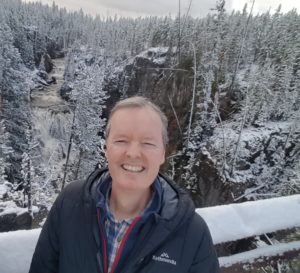 Western, non-Indigenous ontology and epistemologies dominate and underpin all of our knowledge, education and research processes. If we are to support Indigenous cultures in reclaiming their identity, values and traditions, the challenge is to find ways to incorporate and value their knowledges in education and career development – at all levels – by all educational institutions and organisations.
Western, non-Indigenous ontology and epistemologies dominate and underpin all of our knowledge, education and research processes. If we are to support Indigenous cultures in reclaiming their identity, values and traditions, the challenge is to find ways to incorporate and value their knowledges in education and career development – at all levels – by all educational institutions and organisations.
I spent the latter half of 2015 in the United States as part of my Fulbright professional scholarship. My investigation focussed on an understanding of the core principles, values and techniques in education and career development processes that have been most successful for Native American people. I was able to make contact with tribal charter schools, universities, tribal colleges, government, the corporate sector and a range of leading Native American professional bodies.
I found that through the deeper exploration of ‘both ways’ or ‘two-ways’ learning, we can begin to better serve Indigenous people as adult learners in the western sense via the Indigenous and non-Indigenous domains that are compatible. We can do this by indigenising curriculum – finding appropriate entry points in any educational or learning experience where Indigenous knowledge or values can be shared by extension or additional perspectives. This might involve digital stories; examining and discussing cultural artifacts, field visits, stories from elders or even in approaches such as circle seating during classroom discussions.
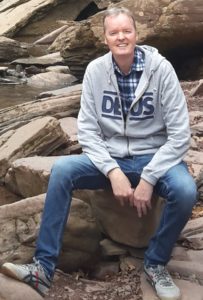 What also emerged in this research is the need for ‘bridge people’, who can assist Indigenous people in navigating the education and career processes to achieve outcomes that align with their values and beliefs. One area where this is particularly challenging is in obtaining credit or recognition in western education programs for what we call informal learning experiences. For Indigenous people this might be volunteer work, community building, acquisition of traditional knowledge and even entrepreneurship. Some Indigenous people need the flexibility of an applied degree that leads to employment opportunities and not necessarily an academic pathway.
What also emerged in this research is the need for ‘bridge people’, who can assist Indigenous people in navigating the education and career processes to achieve outcomes that align with their values and beliefs. One area where this is particularly challenging is in obtaining credit or recognition in western education programs for what we call informal learning experiences. For Indigenous people this might be volunteer work, community building, acquisition of traditional knowledge and even entrepreneurship. Some Indigenous people need the flexibility of an applied degree that leads to employment opportunities and not necessarily an academic pathway.
By examining the concept and process of circular thinking and comparing it to the linear thinking and planning that is the predominant mode of western institutions, we can see why Indigenous people find education and career in the western sense so challenging. We can also see how the philosophical approach of circular thinking can be integrated and blended to provide a more identifiable pathway for Indigenous people, and also a more enlightened and multi-dimensional learning experience for non-Indigenous people.
Circular thinking is a complex subject area and has many definitions and contexts. It is a world that moves and changes and is not reliant on facts or western science to explain how things are, will be or came to be. It is universe of flux chaos, with an orientation that examines multiple perspectives and time in the western sense is not a factor in driving one’s actions. It is a world where everything is related and connected in perpetual multi-dynamic harmony.
The circular approach to career means it is just one facet of life and it doesn’t define an Indigenous person in the same way that it can define the lives and identity of non-Indigenous people. There is a career planning context in the Indigenous sense. Elders advise young Native Americans to have a purpose; to identify their gifts and then to amplify them. This occurs via formal rituals such as ‘vision quest’ or more informally through guidance and mentoring.
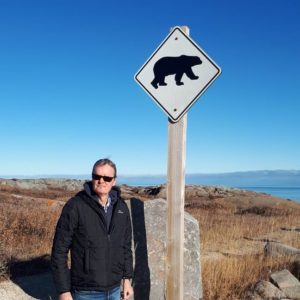 Career in the Indigenous sense also means different things to men and women who have had very defined traditional roles in Native American communities. Accordingly, the careers they pursue today tend to follow those defined paths and gender expectations. Given the core value of support for community, careers in service roles such as education, health and social welfare appear to align most closely with Indigenous values.
Career in the Indigenous sense also means different things to men and women who have had very defined traditional roles in Native American communities. Accordingly, the careers they pursue today tend to follow those defined paths and gender expectations. Given the core value of support for community, careers in service roles such as education, health and social welfare appear to align most closely with Indigenous values.
In the years since my Fulbright experience I have been fortunate to be able to turn many of these ideas into action. I have worked with a wide range of individuals and organisations in all sectors as an adviser, facilitator, coach and mentor.
I would like to extend my thanks to the Australian-American Fulbright Commission and the University at Albany for providing me with this life-changing opportunity.
___________________________________________
*Chief Seattle (Sealth) 1854.
Want to share your Fulbright story too? Let us know by clicking here.
Parallel Lives: a Fulbright Story
By Fulbright Alumnus Elliot Rothenberg (awarded 1964)
-

Elliot with Gough Whitlam
In 1963-1964, my last year at Harvard Law School, I took a course on Conflicts of Laws. Teaching the subject was a visitor from Australia, the dean of the faculty of law of the University of Melbourne named Zelman Cowen. He told us that he liked teaching in America because, he put it, “the most important court for Australia is the U.S. Supreme Court.” That he was a genius of the law goes without saying, but Prof. Cowen had as well remarkable political talents that he would amply demonstrate in the future. He possessed a delightful accent. It was somewhat similar to the British accent that Americans even then were familiar with through TV, but sufficiently different to be as exotic as Australia in general was to Americans back then. The consensus opinion was that Australia was a great country with friendly people who spoke the same language we did in a society that embraced informality and eschewed stuffed shirts. It was my kind of place, but it was the furthest away of any country in the world and few Americans actually went there.
Prof. Cowen became a friend, in fact my best one I had on the law school faculty. We talked about what I planned to do for the rest of my life and he encouraged me to apply for a Fulbright Fellowship to Australia, specifically to the University of Melbourne Law School where, if I got selected for the award, I would work with him on various projects. He himself had been a recipient of a Fulbright award. Zelman was very persuasive. He could talk anybody into doing anything. At age 24 I had never been outside of the U.S., and not to many places in it, so the idea of getting a prestigious grant to go to the end of the known populated world for a year was intriguing to say the least.
Travel from the U.S. to what we used to call Down Under is not to be taken lightly even now, but the challenge was more daunting by far back then. There was no such thing as the instant communication we take for granted today. There was no Internet, there were no personal computers and no smartphones. Even dumbphones were decades into the future. Australia and America may as well have been on different planets. The only feasible way of communicating was by aerogrammes or air letter sheets and that took at least a week each way. It was theoretically possible to make a long distance telephone call between Australia and the U.S., but if you could get through at all the price of the call would be astronomical. For travel you had to carry wads of travelers checks (you can’t get them any more) and hope they held out for your whole trip; credit cards were barely into their infancy (I didn’t have one) and cash cards and ATMs were nonexistent. In case of dire emergency… well, you were on your own and good luck because you would need it big time.
While I was awaiting the Fulbright decision, other offers developed including one especially attractive academic one in First Amendment law from one of the leading law schools in the U.S. In the end, Zelman and others convinced me that I would forever regret it if I turned down a Fulbright. “It is very important to see what the rest of the world is like,” he argued.
So in early August 1964 I left my hometown of Minneapolis for Melbourne. Flying nonstop between the two cities was impossible then, so it was necessary and fun as well to stop at several places along the way, enabling me to visit San Francisco, Honolulu, and even the Fiji airport for refueling.
The last one before Melbourne was Auckland, New Zealand. The weather had changed from hot sunny summer back home to cold and rainy winter. I went to a park fronting the ocean and at its entrance attempted to buy a newspaper. “Tuppence hapeny,” the lady at the newsstand said. “Huh?” “Tuppence hapeny, tuppence hapeny!”, she insisted. The tables were turned; now I was the guy with the accent. A friendly resident interpreter informed me that it meant two and a half pence under the old sterling system. The language was ostensibly the same English, but it was different from the one I spoke. I walked down to the Pacific. There was a raw wind. It was cold and damp. The temperature was not all that low by Minnesota standards, but the dampness went right through you. No one else was in the park. It was only the seagulls and me. There I was lonely and shivering at the end of the civilized world. I was as far as I could get from home. Why, I thought, did I ever decide to do this.
I had one more culture shock when I arrived in Melbourne. The Fulbright organization had arranged living and dining accommodations for me at Trinity College in the University of Melbourne, as it did at the time with all Fulbright fellows at the university. It was perhaps not the most felicitous of placements. The Trinity College main building was cavernous, dark, damp, drafty, unheated, and in general depressing, but that wasn’t the half of it. Trinity was the prestigious Anglican college at the University and it took religion very seriously. Trinity’s stated objective was to “provide a spiritual life through corporate worship and the personal witness of living Christianity.” I was not Anglican. I also was very much discomfited with the conspicuous formality of Trinity, on display particularly at dinner-time where every night the leaders of the college and I would don graduation-style gowns over suits and march single file up to the high table while the poor undergraduates had to stand below and remained standing until we elders sat down. There was nothing remotely like this at Harvard Law School. If there was such a thing as a social-religious-corporate-political-legal Establishment in Australia, Trinity was its epitome. I was not an Establishment kind of guy. After some frank and candid conversations, we all agreed that a change was in order.
Things picked up when I moved into Melbourne University’s Graduate House, a modern and friendly coed facility, at which resided graduate students from Australia and around the world. The long serving full time Graduate House Secretary was a gentleman of aristocratic bearing named William E. F. Berry, always fastidiously groomed and impeccably dressed.
The student occupants of the place weren’t. Everyone there adored him but we all called him Mr. Berry instead of William or Bill; he just preferred it that way. Otherwise, the atmosphere was casual and collegial. The residents dressed scruffily for meals. If anyone there owned a suit, you’d never know it. It was a true graduate house, in other words. One day, Mr. Berry sent a printed memo to all the residents. He expressed his consternation at the prevailing attire. “Distinguished guests” – who had to be impressed, he said – occasionally visited Graduate House. Mr. Berry instructed all male residents to don coats and ties for dinner. We all groused and thought it was a joke, but the Secretary was serious.
I made sure to get to the dining area before everyone else at the first dinner with the formal clothing edict in effect and sat down at the main table with the requisite attire. Mr. Berry arrived and graciously complimented me on my tie. I finished my dinner before everyone else and rose from my seat. First there was silence and then laughter and applause. Ever the iconoclast, I had nothing but running shorts under the coat and tie. Mr. Berry’s memo had said nothing about pants. Harvard Law School taught you to be precise in the writing and reading of documents. The next day, Mr. Berry rescinded his directive. He was a great guy and had a sense of humor. He could have been offended, but he had a big laugh over the episode.
Once a week, we all gathered around the one television set there to watch the “Mavis Bramston Show,” a quite terrific political satire revue far ahead of its time especially for Australia. It was the best thing on Australian television, nothing else being even close. The nearest equivalent today in the U.S. is Saturday Night Live.
The Law School also made me feel comfortable and welcome. I had my own office with the school faculty. Sharing the office for a short time was my predecessor Allen Isaacson who was just completing his own Fulbright fellowship. Allen was a brilliant guy and a top graduate of, interestingly enough, Yale Law School. Dean Zelman Cowen and I were close. He invited me to his house for dinners on Jewish holidays. (Cowen had originally been Cohen). We both loved classical music. We both were sports fans too and went to Australian Rules football games together. Zelman, like me, was an avid American baseball fan and continued to follow the major league baseball standings from Melbourne. For years I had subscribed to The Sporting News, long the undisputed bible of baseball, a thick weekly publication that gave encyclopedic coverage to the sport. It took months for my copies to arrive in Australia by sea but both of us devoured the out of date issues. I became sort of a member of the Cowen family.
Dean Cowen and I collaborated on a series of essays, several of them collected in a book that Oxford University Press in England published after I left Australia. The catchy title was “Sir John Latham and Other Papers.”
I read voraciously in all subjects, and the Melbourne University Library was excellent. The library also had a fine collection of classical music recordings.
Melbourne even then was a classical music capital. I saw classical performers there who rarely if ever came to the U.S. For example, the great pianist Hans Richter-Haaser gave two performances of late Beethoven and Schubert. The great conductor Malcolm Sargent conducted Dvorak and Sibelius in two summer outdoor concerts to massive audiences.
I had the opportunity to travel to many parts of Australia, missing only the northwestern part of Western Australia north of Perth. I met and became friends with many wonderful people, like the rising political leader Gough Whitlam (see photo). I made sure to visit the different university and local libraries. I like libraries; each one is unique.
A couple of trips in particular have stuck in my memory for over a half century.
In 1964, the Trans-Australian Railway from Port Augusta to Kalgoorlie was one of the great train journeys of the world. Its signature wonder was its perfect straight line of almost 300 miles, the longest in the world, through the Nullarbor (no trees) Plain. They called it “The Big Straight” then. It was an astonishing engineering feat; sadly anything like this would be politically inconceivable in the U.S. today.
A second trip was even more memorable, but for a different reason. At the time there was rudimentary commercial air service from Cairns to Alice Springs, with a stop in Mount Isa, if you timed your visit just right. It was not for the faint of heart. I was the lone passenger on my flight to Mount Isa and the only other person on the plane was the sole pilot with no backup. There was nothing separating the cockpit from the passengers. The pilot was jovial and loquacious. He told me he had never had an American passenger before on his route. He flew his plane low over the jungle of Queensland. Even now I have a vivid memory of the tops of the trees. If something had happened to the pilot or the plane, we didn’t have a long way to go down. Call it bizarre or entertaining, it was something you don’t forget even after 55 years. Australian travel in those days was an adventure in more ways than one.
I left Melbourne in August 1965. Because Minneapolis was almost equidistant from Melbourne via the Pacific or the Atlantic, I was able to fly back home through Asia and Europe by paying a very small supplement. In those days, a single airline ticket allowed you to make unlimited number of stopovers as long as you stayed within a generous mileage allotment. I took full advantage of the opportunity, visiting just about all the non-dictatorial countries in Asia and Europe. I didn’t arrive in Minneapolis until January 1966, after a 5+ month odyssey, my own version of the Grand Tour at the very un-grand-tour cost of under $700. I kept a precise log of spending to make sure my travelers checks would hold out. It showed that I spent an average of only $4.38 a day on everything – food, overnight lodging (mainly youth hostels at 50 cents a night), local public transportation, admission fees, concerts, and theater. It was very much possible then and every impecunious traveler carried books like “Europe on $5 a Day.” Today $4.38 wouldn’t buy two rides on public transportation in Europe.
Mr. Cowen and I had some correspondence after I left Melbourne, but after a while we got out of touch. Still our career paths intersected in some unexpected ways.
Seven years after I left Australia, Gough Whitlam led his Australian Labour Party to its first election victory in a generation and became the nation’s new prime minister. When Mr. Whitlam left office it was not of his own accord. In one of the worst political crises in Australian history, the Australian governor general (the Queen’s ceremonial representative, a plum political appointment for prominent politicians but supposedly without political power) unilaterally sacked the elected prime minister. After the smoke of the uproar cleared, the offending governor general was out too. To replace him the new conservative (by Australian but not American political standards) prime minister in 1977 appointed… Zelman Cowen (!). The new governor general’s tenure lasted to 1982.
In a weird coincidence, I served in public office the exact years as Governor General Cowen. To be sure, mine was at a rather less exalted level; I was an elected and re-elected Minnesota State Representative in the state legislature from my district in suburban Minneapolis.
The series of coincidences only began there. After his tenure in Canberra, Mr. Cowen moved to Oxford, took up an interest in the law of the press, and became chairman of the British Press Council in 1983. During the next five years the group under Mr. Cowen’s leadership issued several rulings taking an expansive position concerning powers of the press. The most publicized decision rejected the complaint of a hapless victim of predatory newsgathering by the Rupert Murdoch owned Sunday Times. Mr. Cowen ruled that the newspaper’s behavior, although underhanded, constituted in his words “permissible subterfuge” to collect newsworthy material. Mr. Cowen continued to defend the decision years into the future.
At the same time I became a specialist in First Amendment freedom of the press law as a lawyer in Minneapolis. I came at the subject from a different perspective than Mr. Cowen, though. I was the attorney for people who were suing the press for injuries it caused by wrongful conduct. As it happened my case of a lifetime also began in 1983 and culminated with the opposite result from the Sunday Times case. My client was named, ironically, Dan Cohen, a fellow graduate of Harvard Law School. I don’t think my Mr. Cohen was a close relative of Mr. Cowen, but all people named Cohen are, or so it is stated, related if you go back far enough into the past. The two largest Minnesota newspapers promised
Dan Cohen confidentiality in exchange for information, then broke their agreements, identified him, excoriated him in print, and got him fired from two jobs. It was “subterfuge” on an industrial scale. The newspapers claimed a First Amendment freedom of the press right to dishonor their agreements with others to obtain information for publication. The case went on for ten years with a three-week jury trial in Minneapolis and a verdict for Mr. Cohen. After several state court appeals, the case reached the U.S. Supreme Court. The highest court ruled again for Mr. Cohen, holding that newspapers are subject to the same laws of general applicability as everyone else notwithstanding the First Amendment.
There was no such thing as “permissible subterfuge” for the press, in other words. Cohen v. Cowles Media, 501 U.S. 663 (1991). By this time Mr. Cowen, now Sir Zelman Cowen, had moved back to Melbourne to become a newspaper magnate in his own right as chairman of the Australian media conglomerate Fairfax group.
About ten years ago, I hand wrote a long letter to Mr. Cowen in Melbourne reminiscing and talking about the work and writings of each of us on the law of the press. I did not have high hopes about what response, if any, I would get; we had had no contact for 40 years and we were on opposite philosophical sides concerning responsibilities of the press, the favorite subject of each of us. Well, I was mistaken. Mr. Cowen promptly sent a warm reply and wrote of his struggle with Parkinson’s. We began to communicate again, more through messages shared with our mutual friend, Prof. Harry Glasbeek, who lived near Mr. Cowen and is the only surviving Melbourne Law School faculty member from my Fulbright year.
Zelman by then was in the advanced stage of Parkinson’s and could no longer write. Harry said that he had a difficult time speaking as well, though his mental faculties were intact. I had hoped to find some way to return to Australia and visit him, but it wasn’t to be. His final message to me delivered “with considerable animation” in Harry’s words was to “tell Elliot that I remember him well and with great affection.” The feeling was more than mutual. Zelman Cowen passed away in 2011.
Fifty-two years after my Fulbright fellowship, the Australian-American Fulbright Commission gave me the honor of an appointment as a Fulbright Ambassador. Through the marvels of modern communication Australians and Americans were able to meet and see each other face to face instantaneously by teleconference. It was a far cry from the old days when a written letter and return reply took two weeks.
How does one do justice to the priceless value for a lifetime of the Fulbright experience? We can begin with the academics at a great world-class institution like the University of Melbourne. But there are things other than book learning I found to be of comparable and maybe even greater importance. The Fulbright experience of being on your own for a year was unique in enabling development of personal qualities like self-reliance, discipline, perseverance, independence, and the like. It was hard to do. You could say that a Fulbright year provided a well-rounded education combining the best of learning from books and learning from one’s own mistakes.
Finally, by living and traveling away from America, I discovered that there are other ways of doing things that may be different but just as good and even better than the U.S. So Zelman Cowen was right.
Want to share your Fulbright story too? Let us know by clicking here.
From Arkansas to Australia: An Entomologist’s Journey into the Tropics
By Fulbright Alumna Jessa H Thurman (awarded 2017)
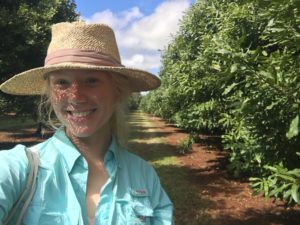 My Fulbright journey began when I met another scholar, Ikram Bahram who came to the U.S. from Afghanistan to study geology. We both met while teaching sections of an ecology camp for kids in Arkansas, and I like to think we became friends because we both knew we were peculiar. Before I met Ikram, I had thought entomologists and our love for studying insects were misunderstood, but Ikram quickly showed me my own biases at geologists and their love for studying rocks. We both had it rough, but our passion for these two fields of study seemed to transfer to the kids as they got excited about a new insect or unique rock. By the end of the camp, he told me, “I applied for Fulbright and it has changed my life. You should apply. You have the passion.” I knew I would love to do a Fulbright research year, but I had no idea what project I could pursue or where, so I laughed and said, “one day, maybe.”
My Fulbright journey began when I met another scholar, Ikram Bahram who came to the U.S. from Afghanistan to study geology. We both met while teaching sections of an ecology camp for kids in Arkansas, and I like to think we became friends because we both knew we were peculiar. Before I met Ikram, I had thought entomologists and our love for studying insects were misunderstood, but Ikram quickly showed me my own biases at geologists and their love for studying rocks. We both had it rough, but our passion for these two fields of study seemed to transfer to the kids as they got excited about a new insect or unique rock. By the end of the camp, he told me, “I applied for Fulbright and it has changed my life. You should apply. You have the passion.” I knew I would love to do a Fulbright research year, but I had no idea what project I could pursue or where, so I laughed and said, “one day, maybe.”
A few months later, while visiting Australia through a Thomas J. Watson fellowship, I met some Macadamia farmers. They were excited to meet an entomologist and share their observations of pests and pollinators on their crop. One was interested in how weaver ants (Oecophylla smaragdina) could be used to control pests in his trees while others were hoping a tiny wasp could eliminate their problems with the fruit-spotting bug (Amblypelta nitida and A. lutescens). I had a background in studying parasitoid wasps at a museum and knew this group of tiny, non-stinging wasps could be used as biological control agents. Biological control had also always interested me, but I had never had an opportunity to study this alternative to using chemical pesticides. Suddenly, I found myself surrounded by farmers who had questions that only a dedicated entomologist could answer. If only someone could spend a year conducting research to help them, then they may be able to develop better pest-management solutions and reduce the pesticides sprayed onto their crop and the surrounding environment. I started writing my Fulbright application immediately, connecting across universities, private businesses, and states to develop a comprehensive research proposal.
 A year and a half later, I was on my way back to Australia to begin what I had proposed: to investigate a potential biological control agent, a native wasp (Anastatus sp.), for the major pest, the fruit-spotting bug in Macadamia orchards. This involved verifying it was a new species, imaging and preparing a species description for the wasp, and studying its parasitism rates on Macadamia farms. An interesting component to my project included comparing farms which were establishing floral strips or reducing their mowing to promote native insect diversity. This habitat manipulation can increase the number of beneficial insects on crops which has the potential to decrease pest damage and increase pollination. For my project, I wanted to know if these habitat manipulations could also increase parasitism rates for our wasp, Anastatus.
A year and a half later, I was on my way back to Australia to begin what I had proposed: to investigate a potential biological control agent, a native wasp (Anastatus sp.), for the major pest, the fruit-spotting bug in Macadamia orchards. This involved verifying it was a new species, imaging and preparing a species description for the wasp, and studying its parasitism rates on Macadamia farms. An interesting component to my project included comparing farms which were establishing floral strips or reducing their mowing to promote native insect diversity. This habitat manipulation can increase the number of beneficial insects on crops which has the potential to decrease pest damage and increase pollination. For my project, I wanted to know if these habitat manipulations could also increase parasitism rates for our wasp, Anastatus.
Measuring parasitism rates on farms presented a series of challenges at first, but over time I worked out my experimental design and was able to get a steady process going. Once established, I found myself travelling and talking to farmers across Queensland and New South Wales. I learned a lot from my conversations with farmers and knew that this was their livelihood, so they depended on thorough research to support management changes before they could make a big switch. It was also amazing to see how much they knew about all elements of their crop. Their insights could inform my research and hopefully my research could provide useful findings for potential management changes.
 These conversations with farmers were also great fun as they loved hearing that I came from a small town in Arkansas and that it’s not pronounced “Ar-Kansas.” We also enjoyed going around the crops and nearby gardens where I could find other insects. One of the most exciting finds was a titan stick insect (Acrophylla titan) which the farmer, Maurice, let me take home to raise when we both realized it could easily become bird-food. After raising that stick insect, I became more and more interested in raising insects to learn about how they grow. Outside of my project, I would go looking for insects in the bush to learn more about Australia’s native fauna. Stunning insects like the Mountain Katydid (Acripeza reticulata), the Botany Bay Diamond Weevil (Chrysolopus spectabilis), and a diverse array of many more. I kept track of most of my finds with photographs, which I would then share online.
These conversations with farmers were also great fun as they loved hearing that I came from a small town in Arkansas and that it’s not pronounced “Ar-Kansas.” We also enjoyed going around the crops and nearby gardens where I could find other insects. One of the most exciting finds was a titan stick insect (Acrophylla titan) which the farmer, Maurice, let me take home to raise when we both realized it could easily become bird-food. After raising that stick insect, I became more and more interested in raising insects to learn about how they grow. Outside of my project, I would go looking for insects in the bush to learn more about Australia’s native fauna. Stunning insects like the Mountain Katydid (Acripeza reticulata), the Botany Bay Diamond Weevil (Chrysolopus spectabilis), and a diverse array of many more. I kept track of most of my finds with photographs, which I would then share online.
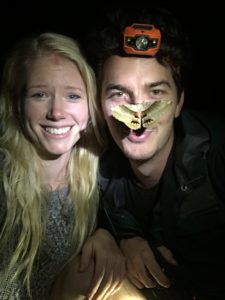 My interest in Australian insects also carried me into joining the Entomology Society of Queensland and volunteering for the Department of Agriculture and Fisheries to help curate their insect collection. I’d finally found a place where I could conduct research that I was interested in and which was useful to others. It was a place where I could invest in my skills of finding and photographing insects. I could learn to preserve them better and how to curate a collection of economic importance. I could also connect with others whose passion for the invertebrate world matched my own.
My interest in Australian insects also carried me into joining the Entomology Society of Queensland and volunteering for the Department of Agriculture and Fisheries to help curate their insect collection. I’d finally found a place where I could conduct research that I was interested in and which was useful to others. It was a place where I could invest in my skills of finding and photographing insects. I could learn to preserve them better and how to curate a collection of economic importance. I could also connect with others whose passion for the invertebrate world matched my own.
After much deliberation, I applied for and was luckily admitted to the University of Queensland to conduct my PhD in entomology. I’m continuing a lot of the work I started in my Fulbright year, both research and bug-chasing, and I couldn’t be happier to be in this community. Fulbright gave me the time to explore and invest in a project, which has guided my current research and outlook on life. I’m thankful to have had the opportunity to find this place where all of my entomological interests can thrive!
Want to share your Fulbright story too? Let us know by clicking here.
Migration, Culture and Friendship across the Pacific
By Fulbright Alumna Mytoan Nguyen-Akbar (awarded 2002)
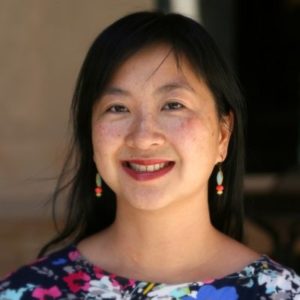 As a Fulbright scholar enrolled in a full-time Master’s degree (M.Phil) during the early 2000s, my curiosity led me to make intergroup and cross-national comparisons of migrant and refugee resettlement policies, the structure of ethnic politics at the state-level, and to process trace the historical shifts in political attitudes towards refugees. Eventually, these questions and themes led me to produce a specific, book-length thesis about the experiences of the Chilean Australian Left and to provide an exile and refugee narrative account of the Chilean community’s political adaptation, history, and public commemoration events, situated within a broader conversation about ethnic belonging, othering, and the subtle erosion of support for multiculturalism in a time of White-led xenophobia.
As a Fulbright scholar enrolled in a full-time Master’s degree (M.Phil) during the early 2000s, my curiosity led me to make intergroup and cross-national comparisons of migrant and refugee resettlement policies, the structure of ethnic politics at the state-level, and to process trace the historical shifts in political attitudes towards refugees. Eventually, these questions and themes led me to produce a specific, book-length thesis about the experiences of the Chilean Australian Left and to provide an exile and refugee narrative account of the Chilean community’s political adaptation, history, and public commemoration events, situated within a broader conversation about ethnic belonging, othering, and the subtle erosion of support for multiculturalism in a time of White-led xenophobia.
Research aside, the friendships I formed with my US Fulbright cohort were life-long, especially people whose work was vastly different from my own (a few examples were scholarly research on hydrology, insect biology or public health) and whose personal upbringing differed from mine in terms of US geographic region, race, class upbringing, and gender expression.
I remain to this day in close contact with my Australian friends: we have flown across the world to attend each other’s weddings — I emceed a bilingual Vietnamese and English wedding at the Melbourne Zoo years later, and an overlapping set of friends emceed my wedding in Madison, Wisconsin.
At present, I work in the City of Seattle Mayor’s Office of Arts & Culture as an Impact and Assessment Manager. Through this applied research position, I get to monitor and assess the city’s community and cultural investments, arts education policy initiatives (known as The Creative Advantage Initiative), community data needs as they arise, and to directly support the reimagining of what access and equity means in the region’s expanding creative economy. This position brought together my career and personal aspirations to have impactful work in public policy, research, and storytelling.
I attribute much of that ability to conduct applied research and to tell impactful stories to my earlier days as a Fulbright scholar based at the Australian Centre, University of Melbourne, and to being fully immersed in arts, culture, and teaching and learning by some of the Asia Pacific’s preeminent cultural studies thought leaders such as Sara J. Wills, Kate Darian-Smith, Nikkos Papastergiadis, and the many visiting scholars who contributed to the Centre’s intellectual vibrancy.
Though now the scales of my work being at the municipal government level are much different, though no less significant, with Seattle seen by many scholars and public administrators as a flagship example for how to institutionalize racial equity throughout government (always with room for improvement), my work and my personal life benefitted tremendously from my time living in Melbourne.
Want to share your Fulbright story too? Let us know by clicking here.
Historical Research, Wondrous Landscapes, and Remarkable Friends
By Fulbright Alumna Carole Fink (awarded 2004)
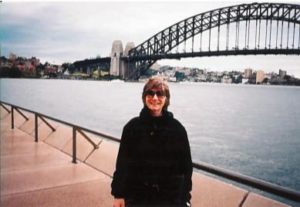 Although my Fulbright award occurred fifteen years ago, between March and July 2004, it left an indelible impression on my personal and professional life. At the time I was Humanities Distinguished Professor of History at The Ohio State University and had just completed a prize-winning book: Defending the Rights of Others: The Great Powers, the Jews, and International Minority Protection, 1878-1938. Under my Fulbright grant, I was a Senior Scholar based in the History Department of the University of New South Wales. During my four-month stay I had the opportunity to do research and lecture and also to get to know a society of great vibrancy and complexity, and a country of great beauty and contrasts.
Although my Fulbright award occurred fifteen years ago, between March and July 2004, it left an indelible impression on my personal and professional life. At the time I was Humanities Distinguished Professor of History at The Ohio State University and had just completed a prize-winning book: Defending the Rights of Others: The Great Powers, the Jews, and International Minority Protection, 1878-1938. Under my Fulbright grant, I was a Senior Scholar based in the History Department of the University of New South Wales. During my four-month stay I had the opportunity to do research and lecture and also to get to know a society of great vibrancy and complexity, and a country of great beauty and contrasts.
My research project was to study Australia’s response to the acute refugee crisis after 1933, when tens of thousands of German Jews, fleeing Nazi persecution, sought safety outside Europe. Despite its vast territory and small population, Australia imposed severe restrictions on these refugees, in the end allowing fewer than 7,000 to enter before World War II broke out. My study in the official government documents, in newspaper accounts, in memoirs, and in secondary sources in Sydney, Melbourne, and Canberra revealed the extremely complex decision-making behind this official policy; and conversations with fellow historians deepened my understanding of this distant period and the changes over time. Over the past fifteen years, I have been able to expand my study of the refugee question, with lectures and articles and am now moving into the contemporary period. I have organized an international Roundtable on the Refugees for the 2020 annual meeting of the American Historical Association, with participants from Australia, Europe, and the US.
During my Fulbright stay in 2004, I was invited to lecture at eight Australian universities and research centers and I also gave four public talks. The subjects ranged from European International history to French, German, and Jewish history. These occasions provided wonderful opportunities to meet new colleagues and students and to engage with a public interested in history.
As to the practical arrangements: thanks to the helpful associate dean at UNSW, I rented, from afar, a two-bedroom apartment in Randwick, just a twenty minute walk to the university. From my balcony, where my tiny jasmine plant grew and flowered, I could see the downtown skyscrapers as well as glorious sunrises and sunsets. Much like a London suburb, my Sydney neighborhood had practically everything in a compact shopping district and was easily accessible to the entire city by public transport. I quickly got used to Sydney’s hills, measuring my exuberance for fresh fruit with the size of my backpack.
My work and zest for adventure took me around the country. I spent eight days in the West, in lovely Perth on the Indian Ocean, as a guest of the Institute for Advanced Studies of the University of Western Australia, and five days in Melbourne, speaking at the Contemporary European Research Centre and the University of Melbourne. I was in Canberra for two weeks, where I did research in the National Library and the National Archives. And I took two choice trips, one to hike in two national parks in Tasmania and one to snorkel on the Great Barrier Reef off the coast of Queensland.
I have wonderful memories of these wanders: of Perth’s beautiful botanic garden with its wild places left intact, and where the towering gum trees lining the roads contain the names of young men lost in World War I; of Melbourne’s bustling Victoria Market and handsome arts center where I heard the Jerusalem Quartet; of Canberra’s stately city design and its amazing art gallery, with a stunning collection of aboriginal art; of Tasmania’s Cradle Mountain and Bay of Fires; of the wonders of the underworld under “Ribbon Reef #5; of the imposing cliffs at the opening to Sydney’s harbor; and of the austere architecture of Temple Emmanuel in Sydney.
Even more memorable were the new acquaintances I made in Australia. There were historian-colleagues with whom to share shop talk on teaching and research and friends with whom to do city wanders and see exhibitions and gardens. With my new acquaintances I hiked in the Blue Mountains, enjoyed the Sydney film festival and the Sydney Opera House, and took bush walks, harbor walks, and cliff hikes along the Pacific. With them, I climbed the Barrenjoey Light House, toured the southern Highlands, and strolled in rain-drenched Fremantle. There were also the lively and informative conversations: about Asian-Pacific economic development, human rights, and the ties between Europe, the US, and Australia as well as about Australian history and politics.
Australia took some adjustment. I went in 2004 from a cold mid-March in Columbus, Ohio to an unseasonably warm and dry fall and winter in the southern hemisphere. I learned to look left for traffic, enter cars on the “other” side, identify native and exotic trees and flowers, recognize that “ta” means “thanks” and “no worries” “you’re welcome,” and that “uni” is one of the many abbreviations Aussies create of everyday polysyllable words.
On a more personal level, I greatly appreciated my host’s and hostess’s politeness, wit, and openness, and their easy ways. I enjoyed the excellent public radio and television, and appreciated Australia’s serious concern about protecting the environment.
I gazed in pleasure and fascination at the hundreds of sailboats in Sydney’s huge harbor. I enjoyed the sight and noise of exuberant, uniformed schoolchildren. Kindly bus drivers and patient passengers expertly guided me to my destinations. I also marveled at the songs and cries of Australia’s birds, the colors of its cultivated and wild flowers, the beauty of the beaches, the contours of the eucalypt trees, the sight of the Southern Cross in the night sky, and the extraordinary blue of the daytime skies, even in June-frosty Canberra.
I have been immensely lucky to have had this experience!
Want to share your Fulbright story too? Let us know by clicking here.
Finding my People
By Fulbright Alumna Grace Chipperfield (awarded 2018)
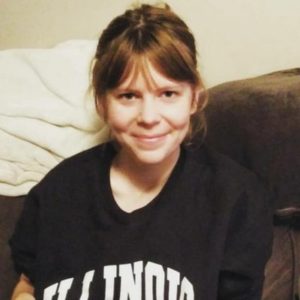 If you’re familiar with David Foster Wallace, you might know that there can be a religiosity to fans of his work. This dedication shows itself in all kinds of good and less good ways, but one aspect of DFW fandom is that certain spots in America have become places of pilgrimage for those who love his writing. I’m one of those fans, and so every trip I’ve made to the States so far has been in some way a pilgrimage to Wallace. For my Fulbright program I went to Austin, TX, and Normal, IL. The Harry Ransom Center, at the University of Texas at Austin, houses the David Foster Wallace archive. You can go to the archive and see Wallace’s draft manuscripts, his letters, his library of books that contain his notes in the margins, his notes to self. Because Wallace died in 2008, as fans we have to reconcile ourselves with knowing we won’t be getting anything more from him as a writer. That’s why something like the archive can be so cool to us. As for Normal, IL—that’s where Wallace worked and lived and wrote. For the past five years there’s been an annual David Foster Wallace conference held at Illinois State University. There’s a local tourist map for people to go visit places where Wallace ate, drank coffee, wrote, lived, you can visit his old office. Devoted fans (those with resources and time to travel) go to Austin or come to Normal on this sorta-pilgrimage.
If you’re familiar with David Foster Wallace, you might know that there can be a religiosity to fans of his work. This dedication shows itself in all kinds of good and less good ways, but one aspect of DFW fandom is that certain spots in America have become places of pilgrimage for those who love his writing. I’m one of those fans, and so every trip I’ve made to the States so far has been in some way a pilgrimage to Wallace. For my Fulbright program I went to Austin, TX, and Normal, IL. The Harry Ransom Center, at the University of Texas at Austin, houses the David Foster Wallace archive. You can go to the archive and see Wallace’s draft manuscripts, his letters, his library of books that contain his notes in the margins, his notes to self. Because Wallace died in 2008, as fans we have to reconcile ourselves with knowing we won’t be getting anything more from him as a writer. That’s why something like the archive can be so cool to us. As for Normal, IL—that’s where Wallace worked and lived and wrote. For the past five years there’s been an annual David Foster Wallace conference held at Illinois State University. There’s a local tourist map for people to go visit places where Wallace ate, drank coffee, wrote, lived, you can visit his old office. Devoted fans (those with resources and time to travel) go to Austin or come to Normal on this sorta-pilgrimage.
 Why we do this will be a different answer for every person. I’m doing my PhD on Wallace, given 3+ years to his stuff, because I get something from his writing. And what I get from reading his work is pretty much exactly what, in a 1996 interview, Wallace said that he got from reading:
Why we do this will be a different answer for every person. I’m doing my PhD on Wallace, given 3+ years to his stuff, because I get something from his writing. And what I get from reading his work is pretty much exactly what, in a 1996 interview, Wallace said that he got from reading:
“…there’s a certain set of magical stuff that fiction can do for us. There’s maybe thirteen things, of which who even knows which ones we can talk about. But one of them has to do with the sense of, the sense of capturing, capturing what the world feels like to us, in the sort of way that I think that a reader can tell “Another sensibility like mine exists.” Something else feels this way to someone else. So that the reader feels less lonely.”
—Wallace quoted in David Lipksy, Although of Course You End Up Becoming Yourself (New York: Broadway Books, 2010), p. 38.
I feel less lonely when I read Wallace. When I got to America, I felt lonely. I remember going to the Ransom Center archive and sitting at a table, looking at Wallace’s notebooks and feeling somehow connected again, conversed with, and safe. But this feeling is so one-way. It’s like magic, but it’s in my head, where I’m still just by myself. And while I appreciate, and relied on, being connected to Wallace to help me with feelings of loneliness, my Fulbright experience became less about Wallace and more about the community that has grown around his work.
I treasure a few very good friendships from my year in America that, though they don’t hinge on Wallace, grew out of a shared love of his work. And beyond that there is the Wallace community writ large, spread across the globe. This community is made up of generous people, generous emotionally and intellectually, and I think they are “my people.” And we’re all less alone because of Wallace’s work. This community has changed me and my research, and I am very lucky to know these people and to have been given the opportunity to spend time with them during my Fulbright exchange. This is only one part of what my scholarship gave me, but/and it’s a significant part. I’m very glad that the Fulbright has this focus on cross-cultural exchange and friendship. I feel like I got a really good gift that keeps on giving to me, and I look forward to giving back to my community.
Want to share your Fulbright story too? Let us know by clicking here.
Seventy Years Ago
By Fulbright Alumnus Bruce Holloway (awarded 1950)
-

Speaking to the 2019 Fulbright Awardees
In late 1949 or early 1950 I saw an advertisement for Fulbright awards on a noticeboard of the Waite Agricultural Research Institute in Adelaide where I was working as a plant pathologist. I had graduated with an Honours Bachelor of Science degree from the University of Adelaide, majoring in Botany and was doing a Master of Science degree at the time. I had become interested in genetics, but at that time no Australian university had a Department of Genetics so study opportunities in this subject were limited. A noted American botanist, James Bonner, had recently given several lectures at the University of Adelaide and I had taken the opportunity to speak to him. He told me that his home institution, the California Institute of Technology (Caltech) was strong in genetics and my reading in genetics had included research workers from there. I applied for a Fulbright scholarship naming Caltech as my preferred place of study.
In July 1950 I learnt that I had been awarded a Fulbright Scholarship which covered my travel, a Smith-Mundt award which provided living costs and a Caltech scholarship to pay tuition, all to cover a year’s study. At that time there was no passenger shipping between Australia and North America, so I travelled by air, Adelaide – Melbourne – Sydney – Fiji – Canton Island – Hawaii – San Francisco – Los Angeles using three different airlines. This was a very exotic experience for me as international air travel at that time was uncommon and expensive.
I arrived in Pasadena early in September 1950 and enrolled for a Master’s degree. During the next twelve months I was awarded a McCallum Foundation scholarship which covered all my living and tuition costs for another year, enabling me to complete a Ph.D. with a major in genetics and a minor in plant physiology. When I decided to study at Caltech, I was unaware of the very high standards of entry. Caltech had a total of 500 undergraduates and 700 graduate students and only took about 10% of applicants. My fellow graduate students were all very talented and this was both challenging and stimulating. Even more impressive was the high quality of the academic staff of the Biology Division at Caltech. Of the staff there during my time, three geneticists, including my supervisor George Beadle, all subsequently won the Nobel Prize.
One of the interesting experiences during my time at Caltech was to find out I was required to register for military training. It was the time of the Korean War and America had compulsory military training for males between the age of 18 and 26. I needed to attend the Pasadena Draft Board and be issued with a Draft Card which I had to carry at all times. At first I was classified 1A which meant liable to immediate call up. I would be given two options – either join the US Army or leave the country immediately. After a year or so, my classification was changed to 1F which meant I was less liable to call up. When I was ready to leave the US, I had to get the permission of my Draft Board to leave the country and with my visa expiring, my money running out and my travel reservations made, I did receive such permission two days before I had planned to leave.
I returned to Australia in late 1952 to take up a Research Fellow position in the John Curtin School of Medicine at the Australian National University. This was very early days for the ANU and I spent the first six months working at Fairfield Hospital in Melbourne waiting for the laboratories to be finished. At the ANU I had the good fortune to be able to choose my own research topic, the genetics of the bacterium Pseudomonas, and this turned out to be a career long activity. My experiences at Caltech had shown me the value of the American approach to research and I felt encouraged to initiate research collaborations with American workers. This pattern continued throughout my career. Over time, I had the good fortune to receive a number of visiting research invitations to various American universities including the Massachusetts Institute of Technology and the University of California at Berkeley. After I left the ANU, I had positions at first the University of Melbourne and later Monash University where I was appointed Foundation Professor of Genetics. At both locations I had American scientists come to work in my laboratory. For 14 years I was a consultant for an established biotechnology corporation in New Jersey.
Collaboration at a distance in those early years had problems that today simply do not exist. There was no internet, email, Google, Skype or Microsoft Word. Communication was almost exclusively by airmail. Letters and manuscripts were typed by office staff. A letter sent from either the USA or Australia took at least two weeks for a reply to be received. International phone calls were prohibitively expensive and it was not until the 1980’s that telex became common and then it was good for only a few pages.
 I firmly believe that my Fulbright grant created the opportunity for me to have an active and rewarding academic and research career. My progress would have been more difficult without the connections that the grant enabled me to initiate over a long period of time with the American research and academic community.
I firmly believe that my Fulbright grant created the opportunity for me to have an active and rewarding academic and research career. My progress would have been more difficult without the connections that the grant enabled me to initiate over a long period of time with the American research and academic community.
Want to share your Fulbright story too? Let us know by clicking here.
Navigating Beyond the Subject Matter
By Fulbright Alumnus David Rawson (awarded 2016)
-

With Former Harvard School of Education Dean Jim Ryan
Despite a steady stream of educational reform over the years, classrooms have not changed considerably from the age of the one-room schoolhouse of the 1800s. What have shifted—against a backdrop of unprecedented accountabilities—are the increased demands on teachers’ time. My own experiences in schools have raised questions for me around teacher sustainability and the need for teaching and assessment practices which might foster it. These questions, and my understanding that the transformative potential of education has always been at the heart of J. William Fulbright’s vision, gave rise to my Fulbright project.
My first days in the U.S. were spent alongside sixty other Fulbrighters from around the globe at a Gateway Program in Miami. Among the bustling crowds along the Port of Miami and the sidewalks overlooking the spectacular art on the Wynwood Walls, I found a like-minded group of people, and realised that the Fulbright program extends far and wide, and that I would be connected to this diverse and inclusive family for life. This “little bit of friendship,” in the words of the venerable Senator, set the scene for a remarkable year of exchange.
I didn’t realise at that time how much—in the middle of a Boston blizzard—I would come to crave that sun-drenched sand of South Beach. I had never even seen snow let alone trudged through it up to my knees. Climate aside, I quickly made my home in Cambridge, Massachusetts and learned a great deal about classroom pedagogy and teacher leadership from thought leaders in the field. The learning ran deeper than the lessons in the course outline. My grant enabled me to observe exceptional teachers creating rigorous and engaging learning experiences every day. Sometimes I was the learner, put through my paces as I grappled with unfamiliar concepts in organisational management and critical race theory. And sometimes I was a fly on the wall, watching from the back corner of the room as teachers developed affirming classroom communities with the provision for critique. Every day, I took note of the subtle manoeuvres that made the teaching look seamless and the learning an actual joy.
 When the opportunity arose to visit classrooms and colleagues beyond Boston, I did. Thanks to the Gregory Swartz Traveling Grant, I flew to Illinois to visit Professor Mary Kalantzis, an Australian researcher working at the University of Illinois at Urbana-Champaign, and herself a Fulbright alumna. I had studied Professor Kalantzis’ work in my undergraduate career, so meeting her was a highlight of my time in the U.S. I was treated to two days of meetings with half of the Education Faculty. They generously took the time to engage with me around my questions and ideas, and helped me to better understand the American educational climate. I was overwhelmed by offers of research collaborations and learned the true extent to the possibilities afforded by the Fulbright brand.
When the opportunity arose to visit classrooms and colleagues beyond Boston, I did. Thanks to the Gregory Swartz Traveling Grant, I flew to Illinois to visit Professor Mary Kalantzis, an Australian researcher working at the University of Illinois at Urbana-Champaign, and herself a Fulbright alumna. I had studied Professor Kalantzis’ work in my undergraduate career, so meeting her was a highlight of my time in the U.S. I was treated to two days of meetings with half of the Education Faculty. They generously took the time to engage with me around my questions and ideas, and helped me to better understand the American educational climate. I was overwhelmed by offers of research collaborations and learned the true extent to the possibilities afforded by the Fulbright brand.
I should not have been surprised that others wanted to know my thoughts about education: it is dialogue, after all, that is at the heart of exchange. While I learned a great deal from my American colleagues, I was also encouraged to share some of what makes education at home unique. Under the mentorship of Harvard’s own educational assessment expert, Professor Daniel Koretz, I was even able to present a guest lecture in his Spring course about assessment in Queensland schools. Many of my classmates took hope from the possibility of an assessment future less shackled to standardised assessment.
My classroom at Brisbane Girls Grammar School benefits from all that I learned on my Fulbright grant. I now create the time and space to follow students down the rabbit-holes of their thinking, helping them to wrestle with their wonderful ideas. I have also focused on developing more robust and collaborative classroom discussions, less about me as the teacher showing what I can do, and more about students developing each other’s insights. I am a more confident teacher now, and one who recognises the centrality of relationships to any learning experience.
My exchange wasn’t all books and classrooms. I visited important revolutionary sites in Boston and Philadelphia, toured sacred lands with traditional landowners in Arizona, explored Washington D.C. with a Fulbrighter from Fiji, and even ran with the sled dogs under the Northern Lights in Fairbanks, Alaska. The vast array of possibilities that my Fulbright grant offered me were virtually limitless, and allowed me to grow not only in my capacity as a teacher, but also in my awareness of the world around me.
 Looking back, I realise how close it all came to never getting off the ground. Teachers are taught to be selfless, and I had told myself that I would be letting my students down to chase after “a pipe dream.” Ultimately, I have come to realise that our students need to see their teachers chase after their goals and model a life of learning. My Fulbright year has been a fillip of sorts, motivating me to develop and propound a repertoire of practices that support my twin goals of student learning and teacher sustainability. More particularly, the year has reiterated for me that being an exceptional teacher—whether in Brooklyn or Brisbane—means recognising that the work extends beyond conveying subject knowledge. It means, just like many of my own teachers, inspiring young people to think for themselves, and creating opportunities for them to discover and pursue their passions wholeheartedly.
Looking back, I realise how close it all came to never getting off the ground. Teachers are taught to be selfless, and I had told myself that I would be letting my students down to chase after “a pipe dream.” Ultimately, I have come to realise that our students need to see their teachers chase after their goals and model a life of learning. My Fulbright year has been a fillip of sorts, motivating me to develop and propound a repertoire of practices that support my twin goals of student learning and teacher sustainability. More particularly, the year has reiterated for me that being an exceptional teacher—whether in Brooklyn or Brisbane—means recognising that the work extends beyond conveying subject knowledge. It means, just like many of my own teachers, inspiring young people to think for themselves, and creating opportunities for them to discover and pursue their passions wholeheartedly.
Want to share your Fulbright story too? Let us know by clicking here.
Embarrassing Moments in (my) Fulbright History
By Fulbright Alumna Eliza Howard (awarded 2005)
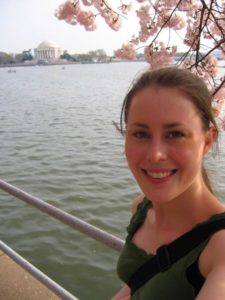 Receiving a Fulbright was—and remains—one of the proudest moments of my life. I am still grateful to those who chose me for this incredible experience, but to this day I still sometimes think that the committee got it wrong. Suffering from a massive bout of ‘imposter syndrome’, I initially thought that they had mislabelled the envelopes when I received my award. (I do realise that receiving the news by post dates me slightly, by the way.) But when I realised that I had in fact received a Fulbright, I was overwhelmed at the fact that perhaps they thought I was the type of person they were looking for.
Receiving a Fulbright was—and remains—one of the proudest moments of my life. I am still grateful to those who chose me for this incredible experience, but to this day I still sometimes think that the committee got it wrong. Suffering from a massive bout of ‘imposter syndrome’, I initially thought that they had mislabelled the envelopes when I received my award. (I do realise that receiving the news by post dates me slightly, by the way.) But when I realised that I had in fact received a Fulbright, I was overwhelmed at the fact that perhaps they thought I was the type of person they were looking for.
The promotional brochures and website showed a more professional side of the award—pictures of lovely people meeting serious movers-and-shakers. In the end, I did collect some of these pictures myself. But there were many more moments of ‘What am I doing?’ and ‘What did I just do?’ Perhaps insights of my tales of woe will be helpful to those of you who initially think that maybe they picked the wrong person.
I left for my Fulbright experience (‘nerd safari’) ten months after receiving word of my award. By then, I had gone through the usual inductions, met the others in my year who I thought were terribly intelligent—far more so than me. But I also felt that maybe I did belong. After all, even though I wasn’t curing cancer, I was passionate about my topic area (nuclear non-proliferation policy) and was the type of person who would throw themselves into the Fulbright arena with a ridiculous amount of enthusiasm and energy. Little did I know how literally I would do this.
My first conference in my new hometown of Washington DC was held at the venerable Ronald Reagan Building at the International Trade Center. It was a major conference on nuclear issues with about 1500 attendees, all of whom had gathered in the foyer for a pre-conference stand-up breakfast on the first morning. I arrived when the room was buzzing with people. Many dark grey suits, some Very Serious Looking Babysitters with ear pieces, and their respective politicians and diplomats. 25-year-old me observed the scene from the top of a very tall staircase for a few seconds. Hands full, I started to descend.
All went well until I lost my footing about halfway down the flight of stairs. Tumbling onto my hands and then gliding as if I was on the world’s worst slip-and-slide, I managed to spill the entire contents of my folder and handbag over the stairs and floor. A silence descended around the cavernous foyer. When I looked up, realising that I had not been seriously harmed (but for my ego!) the attendees commenced their chatter, barely skipping a beat. I then realised I had fallen at someone’s feet. My eyes met his almost as if in a romantic novel. Almost.
‘Oh no…’ (Not the exact words that came to mind, but the most accurate I can publish here.)
As I weakly smiled up at Robert McNamara, former US Secretary of Defense, youngest ever president of both the Ford Motor Corporation and the World Bank, he literally rolled his eyes at me and walked away. So did his security detail.
Now in this post-thesis age I would have asserted my feminist self and berated them both for not helping me up. In those days, all I could think about was ‘thesis, thesis, thesis.’ And at that moment, I knew that I had blown any chance of ever interviewing Robert McNamara. My immediate consolation came, though, in the form of him being much shorter than I ever imagined.
All of this was dutifully recorded in the blog I kept at the time. Little did I know, the blog was also going to be the cause of some amusing hot water when the Washington Post Express highlighted my musings in detail a few months later.
For some time, my trivial insights on living in Washington DC had largely been ignored by the commuter version of the Very Serious Newspaper. But when the US government temporarily banned travellers from importing products with added folate, that’s when my Generation X faux-rage got the better of me and I had to say something. After all, Vegemite had added folate, and this meant the steady supply crossing the border to my mouth would eventually cease. I did in response what any blogger would do at the time, writing about my criminal inclinations in the wake of this absolute scandal.
“I am now a bootlegger!” I declared, as I invited the citizens of the District of Columbia to each try a sample of my newly illegal imports. After a significant increase of hits on my blog from unidentifiable sources in Virginia (cough, cough), to assuage my fears I made a quick visit to the one neighbour who refused to tell me exactly what they did for a living. They assured me that the feds were probably just having a laugh and not to worry. Fortunately, the Fulbright Commission in Australia also saw the funny side of this post and did not arrange to have my visa cancelled.
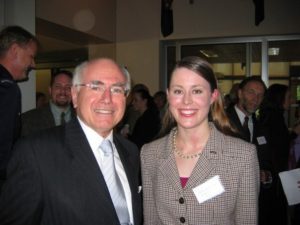 These laughable moments are two of the more ‘Strange’[i] incidents of my time as a Fulbright scholar. Although I still see myself as more of non-conformist, I feel no less a part of the Fulbright community. Advocating for the cause of international education and scholarship brings me immense pleasure, and I still enjoy mentoring new Fulbright scholars and greeting those from abroad. I hope this association is lifelong.
These laughable moments are two of the more ‘Strange’[i] incidents of my time as a Fulbright scholar. Although I still see myself as more of non-conformist, I feel no less a part of the Fulbright community. Advocating for the cause of international education and scholarship brings me immense pleasure, and I still enjoy mentoring new Fulbright scholars and greeting those from abroad. I hope this association is lifelong.
And in case you were wondering, nobody took up the offer to try my Vegemite.
[i] Only true United States history buffs will get this reference. See https://www.nytimes.com/2009/07/07/us/07mcnamara.html
Want to share your Fulbright story too? Let us know by clicking here.
My Mythical Journey Around the World
By Fulbright Alumna Elizabeth Hale (awarded 1994)
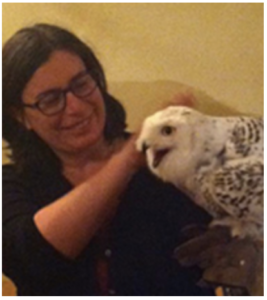 As a child in New Zealand I loved reading myths, legends, and fairy tales. I loved the idea of stories told, and shared, by ordinary people from around the world: the talking yams of African myth, the dragons of Wales, the Maori Taniwha, and the rainbow serpent of Australia. They’re stories that have echoes in the landscape, explain how the stars came to be, and show the magic lurking within the mundane. And while I loved reading generally (especially novels) I studied languages at high school (Latin, French, German) drawn to them by an interest in other cultures, and an appreciation of the people who taught them.
As a child in New Zealand I loved reading myths, legends, and fairy tales. I loved the idea of stories told, and shared, by ordinary people from around the world: the talking yams of African myth, the dragons of Wales, the Maori Taniwha, and the rainbow serpent of Australia. They’re stories that have echoes in the landscape, explain how the stars came to be, and show the magic lurking within the mundane. And while I loved reading generally (especially novels) I studied languages at high school (Latin, French, German) drawn to them by an interest in other cultures, and an appreciation of the people who taught them.
When I went to university at the University of Otago, it was with vague thoughts of going into interpreting. But I got hooked on studying literature as a subject in itself, and on ancient languages—Latin, Anglo-Saxon, Old Norse. I loved the curious stories from ancient cultures, and the way that they live on in modern retellings, adaptations, and allusions. I also got hooked on nineteenth-century novels, their rolling sentences and exploration of the process of how we become the people we are. I did a double Honours degree at the University of Otago, in English (1992) and Latin (1993). And I wanted to continue my studies.
I liked the look of the American system, with its combination of course work and apprentice teaching before embarking on writing the dissertation, and so I applied to graduate programs in the US. I was offered a four-year scholarship in the Department of English and American Literature at Brandeis University, in Waltham Massachusetts. I also applied for a Fulbright scholarship through the New Zealand office, and was awarded one. It covered my travel expenses and health insurance, which was most welcome, and perhaps more importantly gave me access to a network of other international students, and to some wonderful friendships.
At Brandeis, with the support of my excellent supervisor Susan Staves, I drew together my interest in classics and in nineteenth-century literature, and wrote my doctoral dissertation on the representation of classical scholars in nineteenth-century novels. I discovered a surprising amount of them in nineteenth-century children’s literature, and as I worked on the thesis I rediscovered my childhood enjoyment of myths, legends, folktales, and children’s literature more generally. I started reading children’s literature seriously.
When I graduated, as well as publishing on topics in nineteenth-century literature, I also put together collections of essays on New Zealand writers whose work had inspired me as a young reader. These books drew scholarly attention to previously under-examined writers, and also provided venues for established and emerging scholars to write in a new field.
Meanwhile I took a lecturing job in Australia, at the University of New England. It is a university that offers flexible study for students of all backgrounds—many of our students are first-in-family, are returning to study after raising families, or seeking changes in career, or are simply fitting their study into a busy work schedule. I enjoy working with this diverse cohort, and am impressed by their commitment to study.
At UNE I found myself delighted by the vibrancy of Australian children’s literature, which is lively, quirky, funny, provocative, deep, and soulful. I started working with local writers and illustrators, bringing them on residencies to Armidale, the town where UNE is situated. Through my encounters with them, I discovered both how much I enjoy working with creative people, and how valuable it is to help promote and share the work of emerging creators.
Drawing these threads together—children’s literature, classics, creativity—is my current work as coordinator of the Australasian Wing of the Our Mythical Childhood project. The project is funded through the European Research Council’s Horizon 2020 initiative (ERC Consolidator Grant); the leader, Prof. Katarzyna Marciniak (Faculty of “Artes Liberales”, University of Warsaw) had approached me to collaborate with her in 2012, based on our shared interest in classical antiquity as it appears in children’s literature. The Our Mythical Childhood project is massive, involving five Universities, with team members in Poland, Australia, Cameroon, Israel, and the UK, who pursue individual tasks and shared work.
The shared focus of Our Mythical Childhood is developing a comprehensive online survey of global children’s culture inspired by Classical antiquity. We find texts that retell elements of ancient Greek and Roman culture, summarize and analyse them, and publish our findings in the Our Mythical Childhood survey. Entries are tagged by themes, dates, and countries, and the aim is to provide a comprehensive picture of the contemporary works of children’s culture that are presenting classical antiquity to young audiences. So far, the project has uploaded information about nearly 600 texts, including books, film and tv, games, toys, and more. I oversee the Australasian wing, focusing as much as possible on material from the Asia-Pacific and the Southern Hemisphere. You can see some of my thinking about what we find in my blog: Antipodean Odyssey: Explorations in Children’s Culture and Classical Reception.
For this project, too, with my collaborator, Miriam Riverlea (Phd, Monash University), I am writing a Guide to Classical Reception in Children’s Literature, providing an overview of the field, and offering tips on how to navigate it: showing how children’s culture brings ancient into contact with modern, and shapes our understanding of the classical world. Ask a classicist what sparked their interest in the subject, and chances they will say it was a childhood encounter with myth, history, archaeology, and more, through books, games, or tv shows that set them on this path.
As a young Fulbrighter at Brandeis, I didn’t know that my studies and scholarly life would take me on this path, or that my childhood interests would come roaring back in the way they have, so satisfyingly. The skills, connections, and encouragement I gained, however, have taken me on a Mythical journey around the world.
Want to share your Fulbright story too? Let us know by clicking here.
A Scientist’s Creative Career Experiment
By Fulbright Alumna Ariel Marcy (awarded 2015)
-
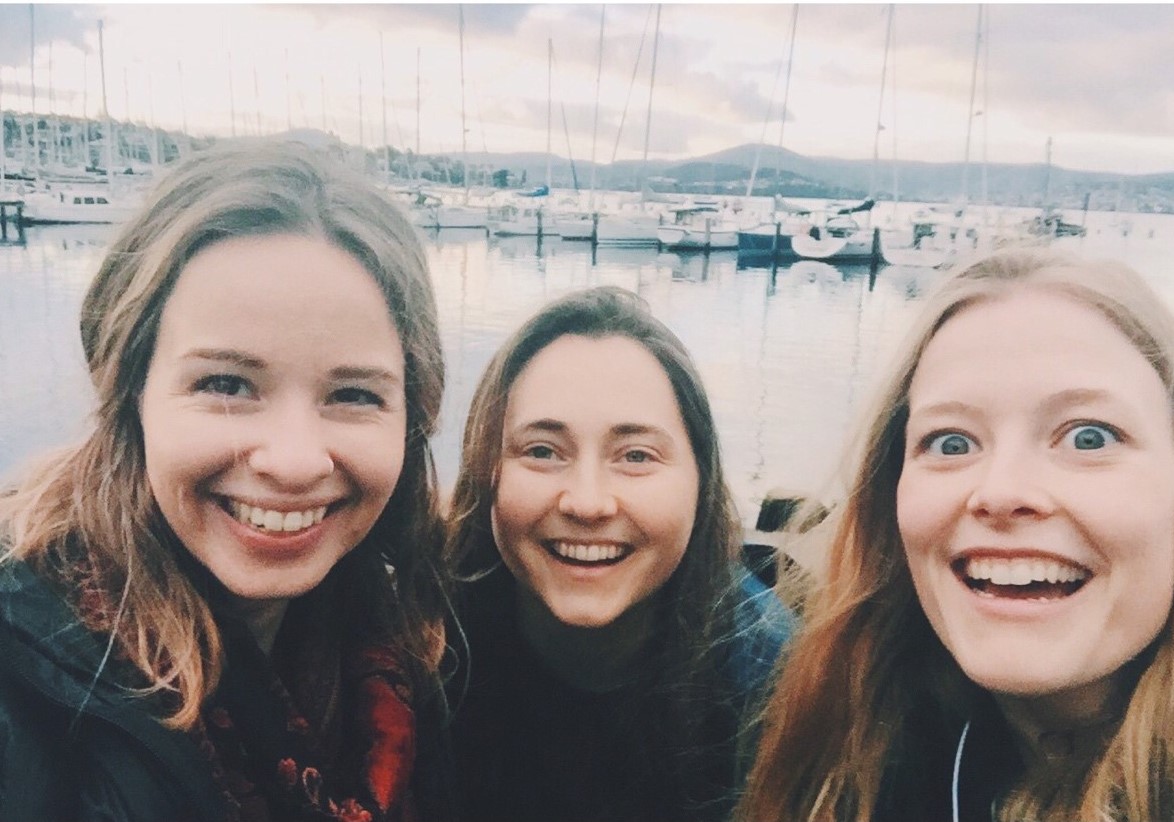
Ali, Ariel, and Kate at the 2015 Australian Mammal Society conference in Hobart, Tasmania.
The three of us trekked, stretching our legs after a lengthy car ride from Brisbane to Lamington National Park. I liked that the Park shared its name with the dessert traditionally used to welcome people to Australia. This trek was my welcoming to Australia by labmates and soon-to-be-friends, Kate and Ali. They were the kind of Aussies who wore hiking boots as regular shoes on an oppressive 35 degree (95 F) day.
This was one of the first things I noticed about them when I joined Dr Vera Weisbecker’s lab as a Fulbright Scholar. They were Honours students and together we were studying Australia’s bizarre mammals. Ali was asking, can a new lab technique improve brain evolution research? Kate was asking, why are there no flying kangaroos? I was asking, can Fulbright help me balance science and educational game design?
 The trail flattened out and we took a water break. The conversation turned to US national parks, so I brought up California’s Yosemite.
The trail flattened out and we took a water break. The conversation turned to US national parks, so I brought up California’s Yosemite.
“Huh,” said Kate, “I’ve never heard of that one.”
“Well,” I replied, “It’s most famous for Half Dome and El Capitan–”
“Oooooh! You mean Yo-za-mite!” Kate’s pronunciation rhymed with Vegemite. I laughed, “Oh, no, sorry, we say it, ‘Yo-sem-it-tee’!” And then everybody cracked it.
 My career tracks west: a childhood obsession with bones and biology propelled me from Vermont to California. In California, I pursued my game design dreams with a successful Kickstarter for my board game about evolution, Go Extinct! This career aspiration to be a scientist who teaches science with games drew me west, again, to Australia. My Fulbright year would be the first time I would try to be a game-designing scientist.
My career tracks west: a childhood obsession with bones and biology propelled me from Vermont to California. In California, I pursued my game design dreams with a successful Kickstarter for my board game about evolution, Go Extinct! This career aspiration to be a scientist who teaches science with games drew me west, again, to Australia. My Fulbright year would be the first time I would try to be a game-designing scientist.
My Fulbright research focused on Australia’s monotremes, the egg-laying mammals. Their egg-laying reminds us that all mammals evolved from a lizard-like ancestor roughly 312 million years ago. My specialty is measuring an animal’s shape, which both natural selection and development impact. I wanted to know if echidnas digging in soft soils were shaped differently from those digging in hard soils (natural selection) and if egg-laying (development) impacted this? In California, I had collected similar data on gophers, digging mammals that give birth.
 Despite the hiking boots worn to lab, my labmates and I did not do field work. Instead, we travel to museum collections where they concentrate the work of thousands of field biologists. I love museum collections. And I definitely did not complain about city-hopping to major museums across Australia! Once there, we trawl the enormous yet meticulous collections for our species. We scan their bones and this becomes our data. Our job as scientists is to communicate knowledge using these data with correctly applied analyses, most of which I learned from Dr Weisbecker.
Despite the hiking boots worn to lab, my labmates and I did not do field work. Instead, we travel to museum collections where they concentrate the work of thousands of field biologists. I love museum collections. And I definitely did not complain about city-hopping to major museums across Australia! Once there, we trawl the enormous yet meticulous collections for our species. We scan their bones and this becomes our data. Our job as scientists is to communicate knowledge using these data with correctly applied analyses, most of which I learned from Dr Weisbecker.
While my research progressed, I tried to design a new card game about animal shapes and development called, Suddenly Cute. I wanted kids to wonder about egg-laying echidnas and flying kangaroos like our lab does. I made game prototypes in between collecting and analyzing data. Kate and Ali would try each one, giving feedback and encouraging me even when they didn’t work.
 By the end of my Fulbright, I had finished analyzing the gopher data but not the echidna data. This reflects the pace of science. Dr Weisbecker and I published the gopher digging paper the following year. Now, as a PhD student in her lab, I get to co-supervise an Honours student finishing the echidna project. As for balancing science with game design, I still pursue that elusive beast. As one example, a local design firm and I wrote grants to make a free online platform, DIY Go Extinct! Here, kids can create their own versions of Go Extinct! around Australian flora, fauna, and fossils.
By the end of my Fulbright, I had finished analyzing the gopher data but not the echidna data. This reflects the pace of science. Dr Weisbecker and I published the gopher digging paper the following year. Now, as a PhD student in her lab, I get to co-supervise an Honours student finishing the echidna project. As for balancing science with game design, I still pursue that elusive beast. As one example, a local design firm and I wrote grants to make a free online platform, DIY Go Extinct! Here, kids can create their own versions of Go Extinct! around Australian flora, fauna, and fossils.
As of 2019, my game design goal continues to be to finish a new science game. Again, connections made through Fulbright came through. In 2016, my host institution, the University of Queensland, did a press release on Go Extinct!, which led to media asking me to do a radio spot. Dr Weisbecker introduced me to her daughter’s school who were happy to let media record the Science Club playing the game. The kids rocked it. The spot played throughout Queensland and founders of a local game publisher heard it! They contacted me and after a few years of back and forth, I’m doing a sponsored, “Industry Placement” with them this year as part of my PhD. The opportunity has huge potential for artistic growth and for finishing that science game. It’s been a long haul, but I couldn’t be happier!
I don’t remember if we finished the Lamington trail that day in 2014. I do remember Ali teaching us to cook damper, an Aussie campfire bread cooked in a tinfoil right on the flames. We made way too much and experimented with jam, Nutella, and yes, Vegemite, for spreads. Today, we are scattered across the globe and we all have creative ways of pursuing science. Kate is doing a Masters in France and making a science podcast. Ali is fulfilling travel dreams in Canada and making wildlife art.
Fulbright was, for me, the most wonderful experiment. I was asking, can I become the scientist game designer I want to be? The experience gave me constructive feedback and confirmed my career aspirations. Importantly, Fulbright continues to support me after my scholarship and this has led to ongoing opportunities. I am also immensely grateful for the wonderful friendships. Fulbright allowed us to cross paths, may we always hike through our uncharted career landscapes together.
Want to share your Fulbright story too? Let us know by clicking here.
A Journey to Oz*
By Fulbright Alumnus Gregory Alexander (awarded 2016)
-

Greg and his wife Mary at a “Hobbit house” during a visit to New Zealand
During my Fulbright I was a Visiting Professor at Macquarie University in Sydney and worked in the Australian Institute of Health Innovation. My Fulbright experiences have forever re-shaped my perspectives of environments, international issues, and cultures within Australia and beyond.
There are many benefits of being a United States Fulbright Ambassador to a far-away country. For example, before I lived in Australia I did not know the answer to the following question: What do the Grey Headed Flying Fox Bat, Wombat, Koala, and Dingo have in common? During my Australian visit, I learned many things about these species. I’ll share a couple of things. First, they are all unique animal species of Australia. Second, the Grey Headed Flying Fox Bat is a nocturnal ‘megabat’ averaging 3 three feet in width from wing tip to wing tip and has a diet of mainly pollen, nectar and fruit. This species is unique in that it has the head and body of a fox, but the wings of a bat. My first encounter with this species occurred during a nighttime stroll along a street in Sydney when one of the bats flew just above my head. At that first encounter, I did not know these megabats ate mostly pollen, nectar and fruit. You can imagine the rest.
Living in a different country, even for short 4 four month duration like my Fulbright, enables a person to experience the environment and culture of the country up close and personal. For instance, my research activities during the Fulbright included interviewing residential aged care administrators and conducting a survey about the use of health information systems in these settings in New South Wales, Australia. In a series of fortunate events, I was interviewed for a publication written by an editor of Australian Ageing Agenda an aged care services magazine. During the interview and subsequent publication I was able to describe my research activities and goals. I used the publication to leverage my recruitment contacts for the research study. As a result, I was invited to visit and meet with over 50 residential aged care administrators and their staff in facilities from four of the six Australian states including Queensland, New South Wales, Victoria, and South Australia.
Remaining in a new and different country for an extended period of time on a Fulbright also enables a person to get up close and personal with relevant issues that are impacting the country, issues that may also be important to the United States. Some issues will not be as apparent to someone who does not live in the same countries. As part of the Fulbright experience, Fulbrighters are encouraged and supported by the organization to attend a Fulbright Orientation Program and a Presentation Dinner. During my Fulbright, this event was held in the Australian Capital Territory, the Federal Capital. The event was held to honor, present, and profile the year’s Australian and American Fulbright Scholars. There was a divergence of issues presented by the scholars. For example, one scholar was conducting foreign policy analysis on the national action plan on women, peace, and security; another postgraduate scholar was conducting environmental science and biology research with Aboriginal rangers who are learning to manage an invasive tree species from Florida called the pond apple that devastates wetland habitats. The diversity of problems which are being addressed provides a unique perspective of the country in which the Fulbrighter is residing, in this case Australia.
The Fulbright experience provides scholars and students with a mechanism to explore and build international relationships anywhere in the world. The selected experience can have either a teaching or research focus or both, depending on the region travelled to and the international contacts supporting the Fulbright. My Fulbright was purely research. I had made contacts with scholars in Australia who were conducting similar research as I was stateside. These contacts were invaluable as I organized my letters of support and began to contemplate the research project I would conduct while in Australia. In my research preparation, I had to acquire Institutional Review Board approval from two Universities including the Australian University where most of the work was conducted, but also from the University in the Midwestern United States where I normally reside. Interestingly, but not surprisingly, human subjects protections in research are important to both countries; although, the process for acquiring approval was slightly different on each university campus.
Outcomes of the Fulbright have exceeded my expectations. During the Fulbright I worked with two other experts on a book which was released in July 2018 titled: An Introduction to Health Information Technology in LTPAC Settings. The book includes an international chapter which includes some descriptions of findings from the Australian residential aged care interviews. I have several peer reviewed journal publications in review illustrating the research results discovered during the Fulbright. I gave four presentations about research innovations in older adult housing, as part of a Fulbright extension that I received titled the New Zealand Aging Lecture Series. After returning home, I have also served as a Fulbright Ambassador giving short lectures about my experience and details of research outcomes at various sites here in the United States. I continue to serve the Fulbright organization which supported me by conducting regional peer reviews of grants for future Fulbrighters. I have also accepted my first PhD student who is visiting the United States while completing a Fulbright, she is from Ghana.
These outcomes and experiences have provided a great deal of personal and professional satisfaction for me. After my Fulbright was completed, I met dozens of Fulbright Alumni as part of an international network of scholars and students who had also achieved great outcomes building international collaborations in research and teaching. Building international collaborations is a great way to explore similarities and differences of environments, international issues, and cultures of our world. The Fulbright organization provides a mechanism to access these opportunities. I highly recommend this mechanism for scholars and students interested in building international relations.
*Edited version of “A Fulbrighter’s Journey,” in the Western Journal of Nursing Research, Volume: 40 issue: 12, page(s): 1731-1733. Available at https://doi-org.proxy.mul.missouri.edu/10.1177/0193945918795129
Want to share your Fulbright story too? Let us know by clicking here.
Fulbright Friendships
By Fulbright Alumnae Michelle Rourke and Shruti Gujaran(awarded 2017 and 2016 respectively)
-
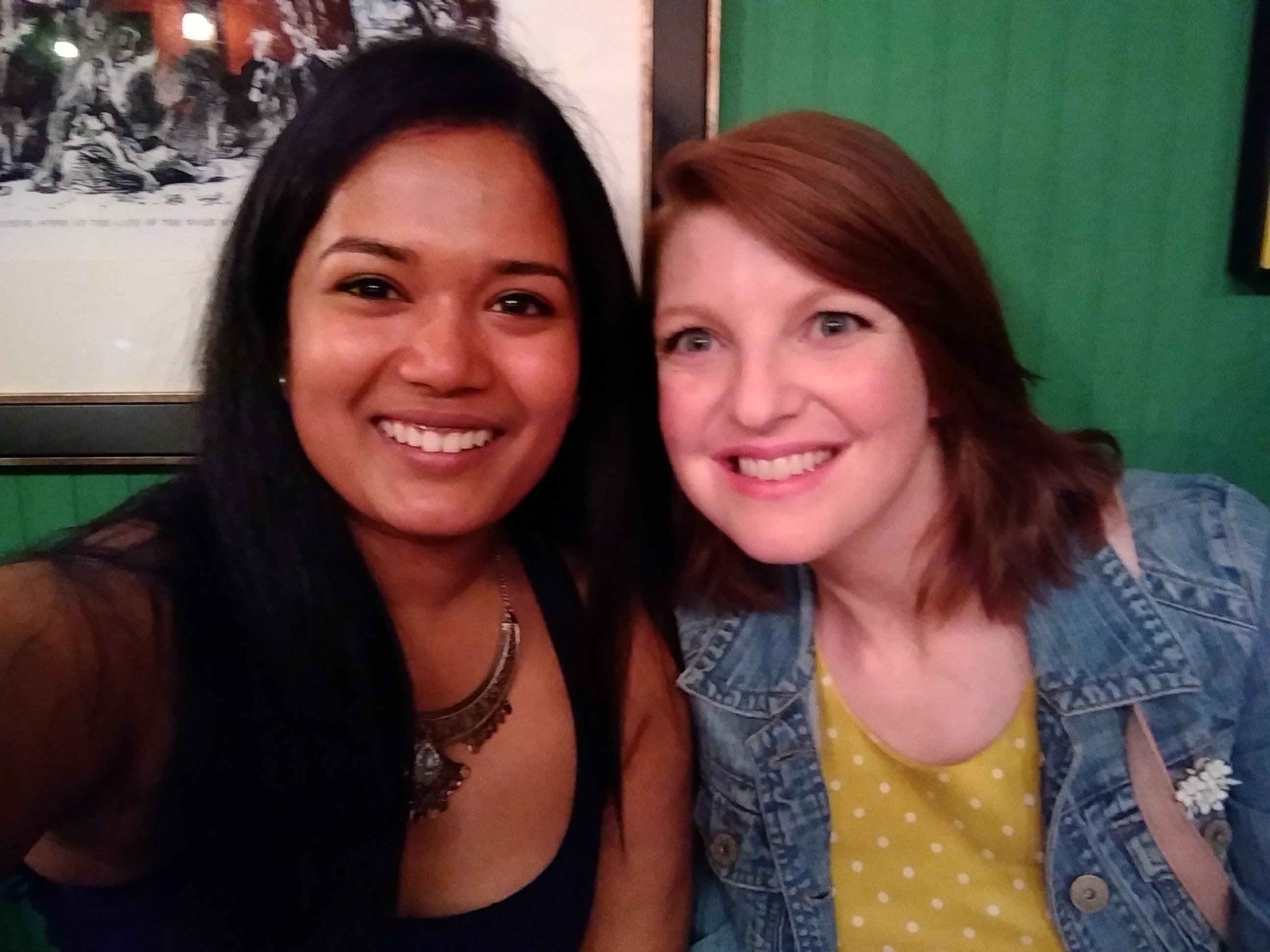
In Baltimore in 2018
The power of the Fulbright Scholarship to further the careers of individual recipients is recognizable in every Scholar’s personal story. Our separate journeys are easy to trace. The professional connections we made during our placements are extremely valuable and the counterfactuals about how our careers might have turned out without the Fulbright Scholarship are individually comprehensible.
What is harder to comprehend is how every Fulbright Scholar’s intercontinental friendships contribute to an unquantifiable but genuine public good. Every single relationship forged by a Fulbright Scholar during their placement adds yet another node to a robust global network of people with diverse ideas and values, from different countries and cultures. These relationships add up to more than the sum of their parts and they contribute to meeting Senator Fulbright’s vision for the Scholarship:
“the Program aims … to bring a little more knowledge, a little more reason, and a little more compassion into world affairs and thereby to increase the chance that nations will learn at last to live in peace and friendship.”
 In an age of hyper-connectedness where it is easy to form digital connections with people from all over the world, we may be tempted to discount the value of face-to-face interactions. Real-world relationships educate us about others and ourselves, they challenge our preconceptions and they create enduring bonds in ways that digital interactions cannot. For each of us, the Fulbright Scholarship has facilitated numerous interactions and opportunities for genuine understanding and friendship. Senator Fulbright recognized that these connections are not only valuable to the individuals involved, but also to society as a whole.
In an age of hyper-connectedness where it is easy to form digital connections with people from all over the world, we may be tempted to discount the value of face-to-face interactions. Real-world relationships educate us about others and ourselves, they challenge our preconceptions and they create enduring bonds in ways that digital interactions cannot. For each of us, the Fulbright Scholarship has facilitated numerous interactions and opportunities for genuine understanding and friendship. Senator Fulbright recognized that these connections are not only valuable to the individuals involved, but also to society as a whole.
Fulbright Scholars are unlikely to express this sort of global sentiment when we describe our individual Fulbright experiences. It is difficult to explain or quantify the social benefits of the Fulbright Scholarship, and it seems arrogant to assume that our individual experiences contribute to some broader societal benefit. But after seventy years, it is impossible to deny that the personal relationships forged because of the Fulbright Program play a greater role in society than we can fully grasp as the individual beneficiaries of these Scholarships.
Want to share your Fulbright story too? Let us know by clicking here.
Protecting Indigenous Children: A Tale of Two Legal Systems
By Fulbright Alumna Marcia Zug (awarded 2017)
-
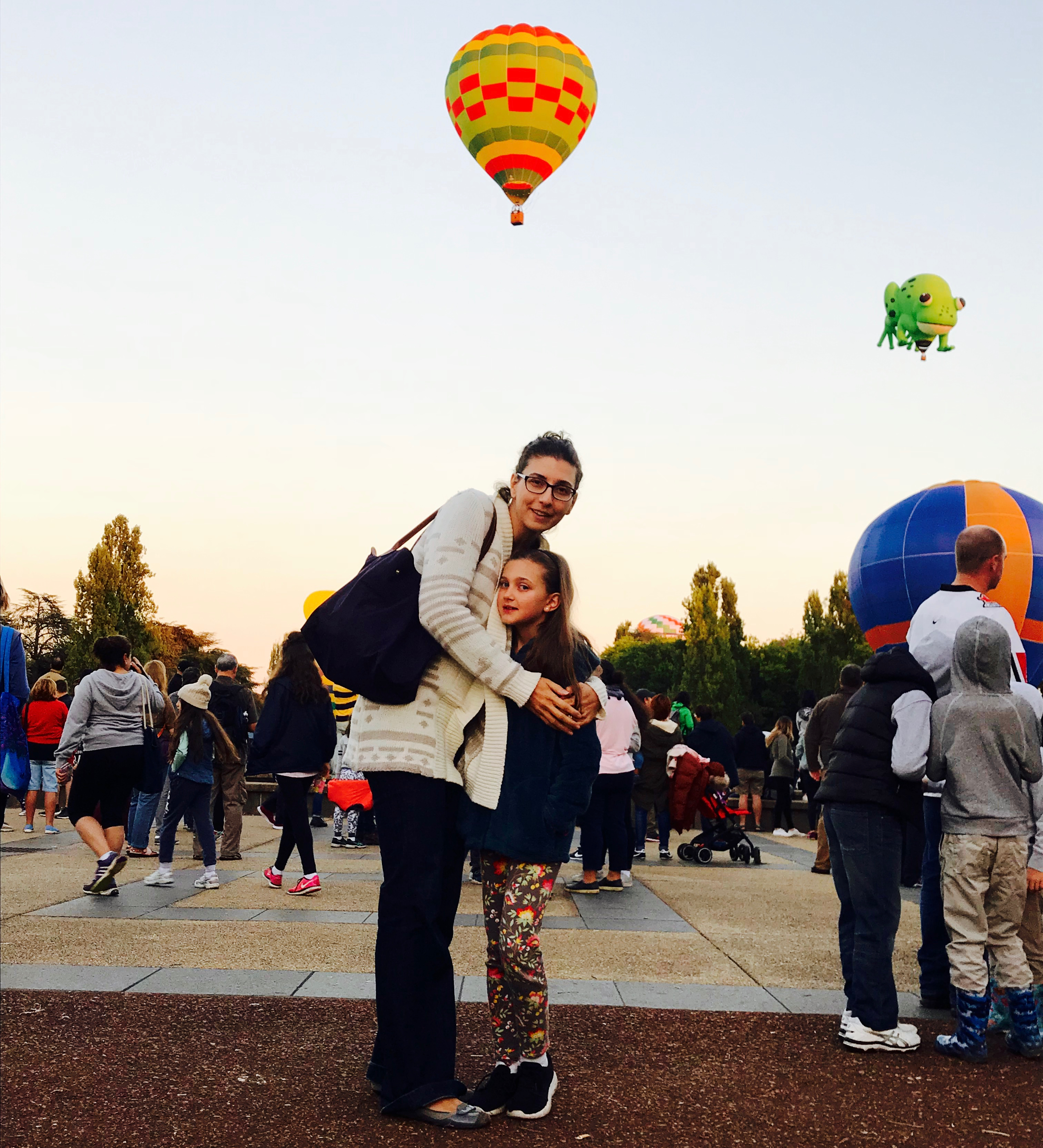
With my daughter Wila at the Canberra Balloon Festival
As a child I was captivated by stories of life on the American frontier. Through these stories I imagined taking a covered wagon across the Oregon Trail, living in a little house on the prairie or striking gold in a California boom town. What I didn’t spend much time thinking about were the millions of Native Americans affected by this westward expansion. As I grew up, I learned this history, but I still understood it as something that happened in the past and had little relevance to modern day people or politics. It was only upon reaching university that I finally began to understand that many of the Federal Indian policies I had come to associate with an unenlightened past, were still occurring in the present. This realization had a profound effect on me. My desire to help address these injustices is what led me to my current position as a law professor at the University of South Carolina where I write on federal Indian policy with a particular focus on laws protecting Indian families and tribal sovereignty.
A large portion of my academic research focuses on a federal law known as The Indian Child Welfare Act (ICWA). The ICWA was passed in 1978 in response to the decades-long government practice of removing Indian children from their families and tribes and placing them in non-Indian homes or institutions. The ICWA was enacted to reduce these unjustified removals. Some of the most important provisions of the Act are the requirements that Indian children are placed with family or tribal members before other carers are considered, that significant efforts are taken to prevent permanent separation, and that the majority of Indian child custody cases are decided by tribal as opposed to state courts.
Indian tribes, advocates and scholars widely agree that the ICWA is one of the most significant pieces of federal Indian law legislation ever passed. The Act has kept thousands of Indian children with their families and helped ensure these children grow up connected to their families and culture. Consequently, given the success of the ICWA, it is not surprising the other Indigenous communities, particularly those with a similar history of family separation have repeatedly expressed interest in importing ICWA. Australian Indigenous advocates in particular have long sought to enact an Australian version of the Act. My Fulbright project was to explore the feasibility and desirability of enacting such a law. In January 2018, I arrived at the University of Canberra to research this question.
Indigenous Australians and American Indians occupy very different legal positions. Accordingly, although the ICWA, has been highly effective in protecting American Indian families this alone did not ensure an Australian version of the Act would produce similar results. The goal of my research was to figure out how the Act might need to change to comply with the Australian legal system and what the effect of these changes would be on the Act’s effectiveness as well as its general acceptance. This research was particularly timely because, as I learned shortly after my arrival, the Australian Parliament is currently considering proposals to relax Australia’s adoption laws and these new standards could apply to Indigenous children.
In the United States, American Indian tribes are treated as limited sovereigns. This means they have significant authority over internal matters, such as child welfare and custody decisions, but only narrow authority over most other matters. Many of the ICWA’s requirements are based on a recognition of this sovereign right to make decisions concerning the care and custody of tribal children. However, Australia’s Aboriginal communities do not enjoy recognized sovereignty. Consequently, to evaluate the feasibility of an Australian ICWA I needed to determine how the ICWA’s assumption of Indigenous sovereignty, particularly the provisions requiring transfer to tribal court, could work in Australia.
Initially, I feared the changes that would have to be made to an Australian ICWA were so drastic that they would inevitably outweigh the Act’s benefits. Nevertheless, as I continued to explore this issue, I began to see how the necessary changes could be implemented without “ruining” the Act and how these changes might actually make it more effective. To reach this conclusion I began to think about Indigenous child protection in ways independent of indigenous sovereignty and to explore legal justifications different from those traditionally used to support the Act in the U.S. Ultimately, I concluded that an Australian version of the ICWA is both legally and practically feasible.
I hope that my research will help Indigenous advocates in Australia as they work to protect Indigenous children and families. However, I also believe my Fulbright research may prove relevant in the United States. The ICWA is currently under attack. In October, a Texas district court judge declared the Act racially discriminatory and unconstitutional. This Texas case ignores more than forty years of judicial precedent yet, there is a good chance the decision will be affirmed. If that occurs, the traditional arguments justifying the Act will no longer be sufficient. New arguments will have to be put forth, arguments like those supporting an Australian ICWA.
Want to share your Fulbright story too? Let us know by clicking here.
Ripples in Spacetime
By Fulbright Alumna Sylvia Biscoveanu (awarded 2017)
-

Holding a baby kangaroo at the Australian International Gravitational Observatory in Gingin, WA
At this moment, the space you occupy is shaking from a background of gravitational radiation. You are being stretched and squeezed in all directions by gravitational waves from the most distant reaches of our universe. Gravitational waves are ripples in the fabric of spacetime caused by the violent acceleration of extremely massive astrophysical objects, but you don’t have to worry about getting ripped apart by gravitational radiation anytime soon; by the time these waves reach Earth, the spacetime distortion they cause is less than the diameter of a proton.
Because these signals are so weak, it takes an extremely sensitive instrument to detect them. The Laser Interferometer Gravitational Wave Observatory (LIGO) consists of a pair of 4-kilometer-long, L-shaped lasers that use the characteristic interference pattern of the laser light to detect when a passing gravitational wave has squeezed one arm and stretched the other. The LIGO Scientific Collaboration announced the first direct detection of gravitational waves from a merging pair of black holes two years ago, exactly one hundred years after they were first predicted by Albert Einstein’s Theory of General Relativity. This was such a monumental discovery that the scientists who first designed the experiment were awarded the Nobel Prize in Physics in 2017, while I was serving as a Fulbright Postgraduate Scholar at Monash University in Melbourne, using LIGO data to study the gravitational wave background.
This background arises from the overlap of many gravitational wave signals that are too weak to be detected individually. An individual black hole merger would go undetected if it’s not close or massive enough, but a chorus of them scattered throughout the universe would produce a persistent hum that might be loud enough for the detector to hear. Together with colleagues at Monash, I worked on implementing the optimal method for detecting such a binary black hole background, developing the tools to run the search and experimenting on mock data. Merging black holes won’t be the only source contributing to the gravitational wave background, though. This background could also be cosmological, a relic of the turbulence in the early universe immediately following the Big Bang. The cosmological contribution would be much weaker than the astrophysical contribution from binary black holes, making it even more difficult to detect. While at Monash, I worked on developing a method to search for and measure both of these contributions simultaneously, a project that is still ongoing.
My time at Monash served as an introduction to many of the techniques I will need throughout the rest of my PhD, which I have just started at the Massachusetts Institute of Technology. During my ten months in Melbourne, I learned so much not only about Bayesian statistics, gamma-ray bursts, stochastic backgrounds, and signal processing, but also about how to guide my own research and pose compelling research questions on my own. I have made invaluable connections with other researchers at Monash and in OzGrav: The ARC Centre of Excellence for Gravitational Wave Discovery, and these are collaborations I plan to continue now that I’ve returned to the US.
I also had the opportunity to share my passion for gravitational waves with the broader community. I organized a series of outreach activities for local year 10 students, teaching them the basics of gravitational wave data analysis and interferometers. I gave song to that chorus of merging black holes with my supervisors, Dr. Eric Thrane and Dr. Rory Smith, on ABC’s The 7.30 Report. I presented a TEDx talk on gravitational wave backgrounds in Canberra. Together with another postgraduate student at Monash, I started a mentoring program for women in physics and astronomy at all stages of their careers, from undergraduates to faculty, bringing over one aspect of my undergraduate education that led me to ultimately pursue a career as an astrophysicist.
In addition to my research on gravitational waves, I was also able to pursue my passion for music. I played violin in the Monash Academy Orchestra, gaining exposure to the works of Australian composers under the baton of top Australian conductors. It was quite a shock having to ask my stand partner about crotchets, quavers, and breves during my first orchestra rehearsal, since we use different musical terms in the US! These opportunities allowed me to give back to the community that became my new home, and I have taken many aspects of my Australian home back to the US with me—13 boxes of Tim Tams, lifelong friendships, new professional connections, and a deep appreciation of the intradepartmental collaboration at Monash that made me feel so welcome.
Want to share your Fulbright story too? Let us know by clicking here.
Making Memories in Australia
By Fulbright Alumna Michelle Meade (awarded 2013)
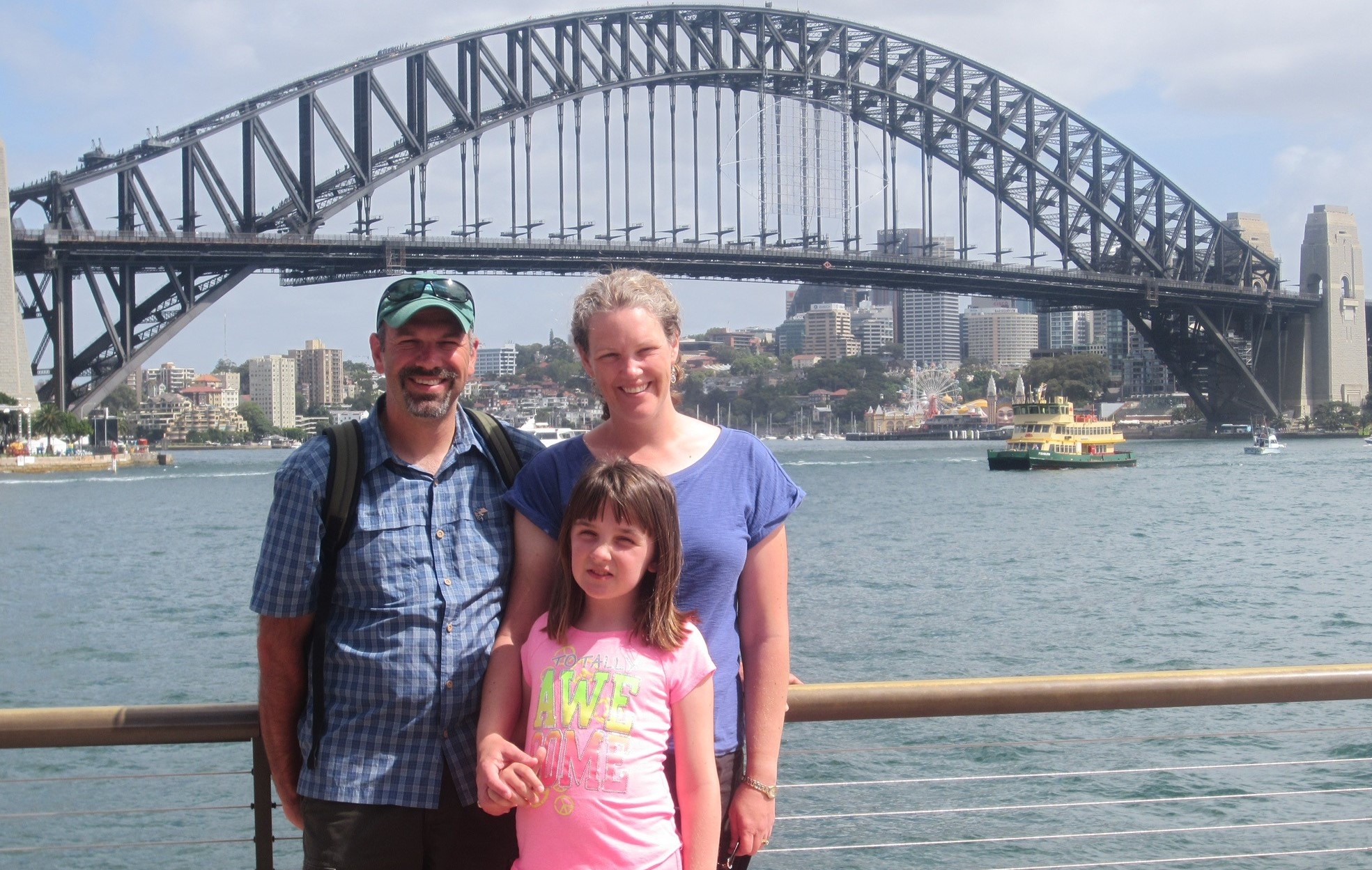
Our memories, and the memories we share with others are a critical aspect of daily life. My research focuses on understanding how memory works and what factors influence what we remember. More specifically, I’m interested in understanding how our individual memories are influenced when we remember with other people. We frequently collaborate with others on memory tasks: friends and families reminisce together about past past events, students work together in the classroom, and older adults rely on each other to remember critical details. Of course, not all groups are equally successful when they collaborate. My research examines why collaboration disrupts individual memory in some settings and enhances individual memory in other settings (i.e. when individuals remember a greater amount of accurate information when working with a partner than when working alone)… read more.
Finding the Balance
By Fulbright Alumnus Michael Raitor (awarded 2017)
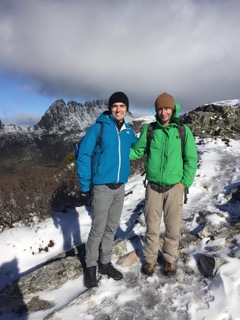
Nearly one in three adults over 65 will experience a fall in the next year. Falls often result in long-lasting health effects that significantly reduce an individual’s quality of life. Fall-related injury is not only devastating on a personal level, it has widespread financial effects in both the U.S. and Australia. Fall-related injuries are estimated to cost the U.S. healthcare system over $30 billion (USD) annually. As our global population continues to age, reducing the frequency and severity of fall-related injuries is essential to enabling older individuals to live fulfilling lives while minimizing the cost to healthcare systems.
During my U.S. Fulbright Postgraduate Scholarship, I spent nearly one year at the University of New South Wales (UNSW), in Sydney, Australia. My work at UNSW focused on developing technology to prevent fall-related injuries in the elderly. I was fortunate enough to work with a team of researchers with a broad set of academic and professional backgrounds. The principle investigator of my research project, Professor Nigel Lovell, is a leader in the fields of neuroprosthetics, telemedicine, and fall detection. Professor Lovell’s previous work made large contributions to increasing the duration and quality of life for elderly people by enabling them to “age in place” in their communities rather than needing to move to a nursing home so they could be monitored for falls. Detection of a fall after it has occurred is incredibly important to ensure the user receives the medical attention they need as soon as possible. Accurate and fast fall detection is important, but is ultimately limited in its effectiveness because the user still falls and is potentially injured before the system is activated. That is where my Fulbright project comes in.
My Fulbright project was part of a new wave of medicine that is just beginning to take shape: preventative medicine. It may seem strange, but until recently, medicine was primarily damage-control, trying to repair or replace a part of the body already diseased or damaged. Rather than trying to detect when someone may have fallen and been injured by a fall, my Fulbright project began to lay the groundwork for preventing the fall altogether.
As with any highly ambitious scientific endeavor, developing the tools for preventing fall-related injuries has been filled with intermittent success and failure. It was in these periods of recovering from research setbacks and pivoting our strategy that the uniqueness of the Fulbright program truly struck me. Every time I would speak with members of the Fulbright commission to update them on my work and how we were making progress while refining our strategies, they were behind me 100%. There is an unfortunately accurate saying in academia, “publish or perish.” Not once did I feel that applied to me while on my Fulbright. Instead, I felt I had the support to dig into the research, ask the hard questions, and, frankly, take the time to do the research well. Having the support to slow down, reflect on my research and carefully lay plans for future work has been invaluable to me. This time to reflect and plan in Australia played a major role in the breakthroughs we had while I was in country and has been hugely influential in my research interests since completing my Fulbright Scholarship.
In addition to a hugely impactful professional experience, Fulbright was a profoundly life-changing personal experience. The Australians I met while living in Sydney and my cohort of Postgraduate Scholars helped me grow in ways I never would have imagined and are undoubtedly life-long friends. While in Sydney, I frequently met some colleagues from UNSW and their normal workout crew of about 20 people at 6 am for training on the beach and then an ocean swim as the sun rose. We would wrap up the morning chatting over coffee about everything from their adventures backpacking across the U.S., to how investment banking differs in Australia. These coffee sessions taught me all about various aspects of Aussie life, values, and slang, which many of the group took a special interest in teaching me. As a stranger in a foreign land, I was forced to reflect on the social customs I took for granted in the U.S. and to grapple with the reputation of being an American abroad during a controversial time in our history. These early morning chats were some of the most challenging, humorous, and enlightening conversations I had in Australia, and were an essential component of my Fulbright experience.
One of the most precious relationships I formed in Australia was with another Fulbrighter who was also based at UNSW. On the weekends we would often meet up to go into the city together, take hikes, and occasionally fly to a different city in Australia to explore there as well. During one memorable long weekend, we flew to Tasmania, summited several mountains, and returned to the mainland via Melbourne so we could spend some time with other Fulbrighters as they showed us around their city.
As a testament to the strength of my personal and professional relationships formed during my Fulbright, neither have ended since I’ve returned to The States. After completing my Fulbright, I took a trip to Japan with another Fulbrighter and a friend we had made in Sydney. Additionally, I am still coordinating research efforts with my host lab at UNSW. I am unbelievably fortunate to have been awarded a Fulbright to Australia. My Fulbright has had profound impact on my life both personally and professionally, and I wait anxiously to see how the experience continues to influence me in the years to come.
Want to share your Fulbright story too? Let us know by clicking here.
From Music Tutor to University Leader
By Fulbright Alumnus Warren Bebbington (awarded 1976)
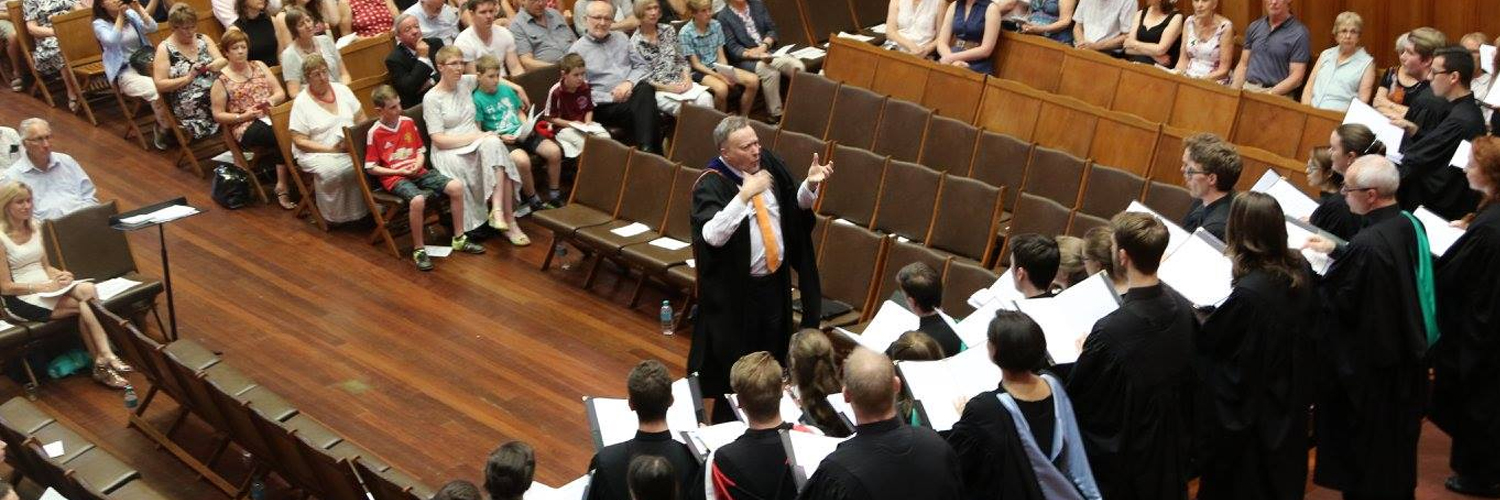
Becoming a Tutor in music at the University of Melbourne in 1974, when I had just graduated with my bachelor’s degree, soon filled me with more questions than I had answers for. In those days, music training in Australian conservatories mostly followed dated British models, and opportunities to do specialist postgraduate study were limited. I soon hungered for advanced study abroad. Exploring the course options in Europe and the USA, I noticed that many of the texts I had used in my undergraduate course were written by musicologists teaching in New York; so having successfully obtained a Fulbright award, and with a travelling scholarship from Australia, I set out for “The Big Apple,” where I enrolled for a PhD in Musicology… read more.
Next Door to Sputnik; Alongside Armstrong in Spirit!
By Fulbright Alumnus Paul Grimwood (awarded 1965)
-
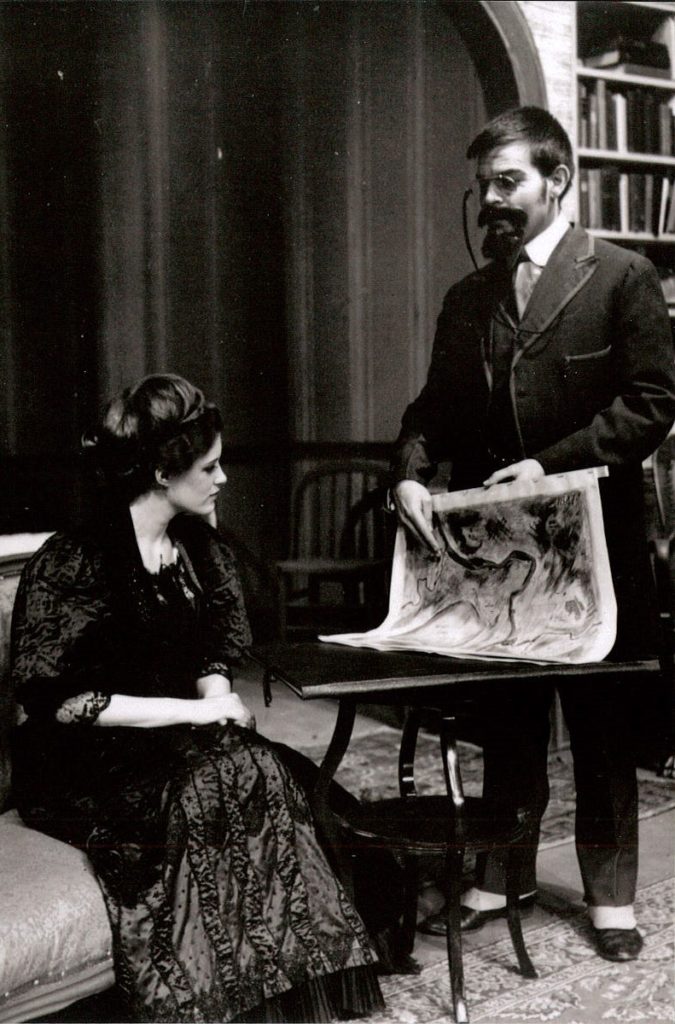
Elisa Evett as Yelena and Paul Grimwood as Astrov in Chekhov’s “Uncle Vanya” – May, 1966
Sputnik was launched in the early sixties. I went to Cornell University in 1965, under the banner of Fulbright, to do research into spacecraft re-entry problems. Part of our context was the moon race. For instance, I came from home to my lab to watch Armstrong’s moon landing.
Mine was just one of the contributions of many to the grand space efforts.
I was a Fulbright Scholar from 1965 until 1970. A long time ago!
It is true that the money from the scholarship, along with teaching and research assistantships from Cornell University, made it possible for me to complete my doctorate at Cornell, and be a post-doctoral fellow for a year. I value that.
At the same time I value the principles that William Fulbright espoused in establishing the scholarships. In particular, I value the notion that the scholarships foster learning and educational experiences that lead on to pursuits in the broader career of the Fulbright Scholar. There was no restriction on the Scholar’s journey. There was simply encouragement that the Scholar contribute to his or her community, and perhaps that could be in the Scholar’s homeland.
I emphasise that the Fulbright Foundation was remarkably unrestrictive in the administration of the scholarships, and that was appreciated. It is also true that one requirement placed on me in travelling to Cornell from Australia was that I travelled by train from the point of entry to the US to Cornell, close to the eastern seaboard. At the time I railed against the requirement. I wanted to reach Cornell and to get on with things there. It took me years to recognise how valuable it was to be introduced to the US community this way. I later chose with my wife to travel across the US by car. Each experience built on the other. In quiet times of reflection much later in my career, I wondered how much that trip influenced my appointment as chief executive of the Australian Railway Research and Development Organisation, and as Director General of Transport in N.S.W. I doffed my hat to William Fulbright.
The period I spent in the US as a Fulbrighter, 1965 – 1970, was a memorable time for many reasons. Some related to my personal life. Some related to my academic life. Some related to the happenings in the US and, more broadly, the world.
1968 was a tumultuous year! Bobby Kennedy was assassinated. Martin Luther King was assassinated—on my birthday and two days before the light of my life and I were married. About that year Afro-American students, only weeks after the disturbances at Kent State, rebelled on campus at Cornell. Cornell, wisely in my view, chose to seek a new way forward. They instituted a Constituent Assembly. In my view it was designed to release the pressure and to find a way forward for all its students. As a delegate to this Assembly—elected by my peers—I became a contributor to Cornell’s future governance. Even at the time I had no doubt that Fulbright values influenced me.
The Vietnam war was a constant in our lives. There are many dimensions, even for me. One personal one lives on. I would come down from my dorm to get breakfast at a nearby restaurant. “Two eggs over easy, toast and coffee” was my standard order. I was a regular. So, too, was Daniel Berrigan, a Jesuit priest. As a protest, with his brother, also a Jesuit, and their colleagues, he poured blood over the files of conscripts to the Vietnam War. They were nailed for it. Our conversations: “Please pass the salt, Dan”.
It was not simply a time of momentous events. Personal actualisation and fulfilment had their places. For instance, I continued developing as an actor. I felt good about being able to work with the people brought in to the summer-stock activities. It was fun to be a meat baron in one of Brecht’s plays! Sure.
And I came to have more insight into Fulbright. I give to him insight that acting, being able to bring a character to life, is immensely valuable in establishing rapport in negotiation in any field.
I confess to a peccadello! I had neglected to alert my Professor that I was continuing with my acting. Perhaps you can appreciate my feelings when, as Dr Astrov in Chekov’s Uncle Vanya, the curtain opened and I saw from the stage my Professor and his wife. He later suggested that I had a choice to make: research or the theatre. I chose both.
My time at Cornell was, in my view, remarkably developmental for me. I do recognise that, to an impartial observer, it may appear to be remarkably mundane. Even now I smile. I think Fulbright would have been satisfied to have many whose experiences were/are as remarkably mundane as mine, thanks to him!
Want to share your Fulbright story too? Let us know by clicking here.
A Professional, Personal, and Family Experience Like No Other
By Fulbright Alumnus Tim Carey (awarded 2017)
Being awarded a Fulbright Senior Scholarship enabled me to spend four months at the Center for Behavioral Health Innovation (BHI), Department of Clinical Psychology, Antioch University New England. The University is a very small postgraduate university of approximately 1000 students. The Department of Clinical Psychology is one of five departments at the University and offers a Doctorate of Clinical Psychology. The University has a very strong and explicit social justice focus with many messages on noticeboards about the importance of equality, acceptance, and understanding.
It was a privilege to spend time at BHI learning about the work that they do. They are a small center led by two of the faculty members of the Department of Clinical Psychology and six other staff. They partner with organisations in rural and underserved communities helping these organisations to establish systems of ongoing monitoring and feedback in order to promote the effectiveness of the services they deliver. During my time there BHI staff were working with schools, health centres, and philanthropic organisations on various projects. The evaluation context in the US is quite different from Australia with the Federal Government in the US mandating that a proportion of funding (commonly 20%) for services and programs be allocated to the evaluation of those interventions. Funding for BHI largely comes from this requirement.
While working at BHI we developed a project to investigate the factors that might be important in establishing and sustaining ongoing monitoring and feedback within an organisation. I interviewed 15 people from organisations with whom BHI had partnered at some time over approximately an eight year period. The people I interviewed had different roles within the organisations from leaders to service providers but they all spoke emphatically about the value of evaluation. They explained that, through ongoing monitoring and evaluation, they could make sure that the help that was being delivered really was experienced as help by the service recipients. They also emphasised the importance of having buy-in from the leadership of the organisation and of embedding systems within daily routines so that “the right thing to do is the easy thing to do”. Unanimously, interview participants spoke of the importance of the data they collected in terms of being able to engage with communities, communicate with funders, and “tell stories that touch people’s hearts as well as their heads”.
As a complementary aspect to my project I was fortunate to be able to speak with Dr Richard McKeon, who is Chief of the Suicide Prevention Branch of the Substance Abuse and Mental Health Services Administration. Like the people I interviewed, Dr McKeon emphasised the importance of collecting data and basing program decisions upon the data that are collected. Dr McKeon argued strongly that having data to highlight an issue can become an important way of persuading people that something needs to be done and to answer basic questions.
The work at BHI and the learnings from the project I conducted have important policy and practice implications for service delivery in remote health settings of Australia.
In addition to the work at BHI I had the opportunity to participate in the Oz to Oz program at Kansas State University. I was hosted by their Master of Public Health program and got to meet senior university personnel and learn about some aspects of their approach to public health. Their public health program is interesting because it is not delivered within a medical program or department. While I was at Kansas State University I delivered a colloquium titled “Defining Health: Issues and solutions”. I provided a related colloquium back at Antioch University titled “Health as Control: An organising principle for the biopsychosocial model”. These speaking engagements enabled me to discuss ideas from my recently published book “Patient-Perspective Care: A new paradigm for health systems and services”. A further invitation to speak to residents and students of the Family Medicine Residency at the Eastern Maine Medical Center and to staff of Acadia Hospital in Bangor, ME allowed me to explore these ideas in greater detail with a talk titled “Improving Health in Rural and Remote Contexts with Patient-Perspective Care”. Further teaching opportunities arose with three classes provided in the Brief Psychotherapies course of the Doctor Clinical Psychology program at Antioch.
I was fortunate to have my family accompany me to Keene, NH for the duration of the Fulbright Scholarship. I think we benefitted just as much personally as I did professionally from the time we spent involved in the community life of Keene. It was wonderful to experience occasions such as Halloween, Thanksgiving, and Christmas in the US with new-found friends and their families. Among other things, we picked blueberries and apples, carved pumpkins, turkey trotted at our son’s elementary school, trick-or-treated around the neighbourhood, and did some snow tubing. We also discovered that the saying “I’ll be there with bells on” originated in New England and we had many interesting discussions about New Hampshire’s state motto: Live free or die.
It’s an enormous privilege to become a Fulbright Scholar and tremendously humbling to be a part of the legacy Senator Fulbright started more than half a century ago. There was a real sense as I was undertaking the Fulbright Program that I was “living the dream”. There wasn’t ever a point when I wanted the dream to end. I still don’t. Thankfully, as a Fulbright Alumni, the dream can live on.
Want to share your Fulbright story too? Let us know by clicking here.
Teaching machines to play fair
By Fulbright Alumnus Daniel McNamara (awarded 2016)
I had the good fortune to visit the Machine Learning Department at Carnegie Mellon University in Pittsburgh as a Fulbright Postgraduate Scholar in 2016-17. During my eight months there I had the opportunity to learn from a technically brilliant group of academics and students who are designing algorithms that will shape the future.
As part of my Fulbright program, I participated in an Enrichment Seminar on Civil Rights in the United States. The seminar was held in Atlanta – birthplace of the Civil Rights movement and to this day an important centre of African-American political activity. More than 100 Fulbrighters from around the world heard from African-American leaders and activists, visited the Civil Rights Museum and Martin Luther King’s tomb, and ran a story-telling workshop at a local school.
-
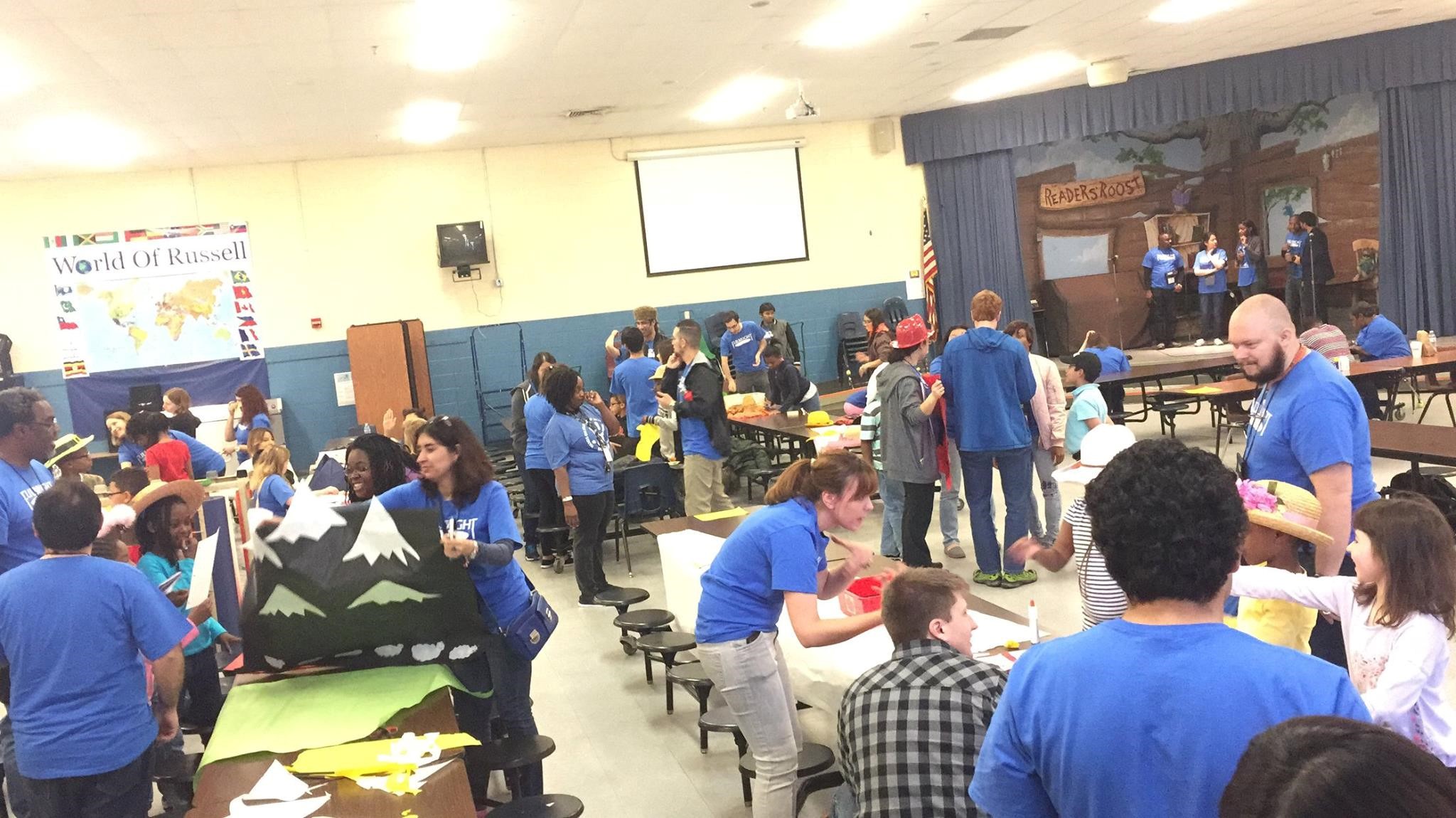
Fulbrighters ran a story-telling workshop for Atlanta school students as part of an enrichment seminar on Civil Rights in the United States held in March 2017. Photo credit: Christopher Nagel.
Algorithmic decision-making and fairness
Joining the dots between seemingly disparate subjects – the latest technical developments in machine learning and the political struggle for racial equality in the US – I became interested in the challenge of ensuring that decisions made by machines are fair. This has become an important and rapidly emerging field of research which is attracting attention from scholars in machine learning, law, philosophy and other disciplines. And everyone else – whose lives are increasingly influenced by decisions made by algorithms – are keenly awaiting solutions.
Machine learning systems are now widely used to make all kinds of decisions about people’s lives – such as whether to grant someone a loan, interview someone for a job or provide someone with insurance. There is a risk that these algorithms may be unfair in some way, for example by discriminating against particular groups. Even if not intended by the algorithm designer, discrimination is possible because the reasoning behind the algorithm’s decisions is often difficult for humans to interpret. Furthermore, artefacts of previous discrimination present in the data used to train the algorithm may increase this tendency in the algorithm’s decisions.
An interesting example is the use of recidivism risk scores, which are commonly used in criminal sentencing in the United States. The news organisation ProPublica investigated one widely used system, COMPAS. The investigation showed that black defendants received higher risk scores than white defendants. Furthermore, the risk scores made different kinds of errors for defendants of different races. Black defendants were overrepresented among the false positives: people who were given a high risk score but did not re-offend for the next two years. Conversely, white defendants were overrepresented among the false negatives: people who were given a low risk score but did in fact re-offend.
Baking in fairness
To remove or minimise discrimination effects caused by the use of machine learning systems, fairness may be ‘baked in’ to algorithm design. This approach benefits users of such algorithms, particularly those in social groups that are potentially the subject of discrimination. Moreover, as rapid technological progress drives disruptive social change and in turn resistance to such change, such design decisions will be required to maintain the ‘social license to operate’ of companies using the algorithms.
Incorporating fairness into algorithm design also has a role to play in the effective regulation of algorithms. For example, fairness is considered in the European Union’s General Data Protection Regulation, which comes into force this year. Paragraph 71 of the preamble states:
In order to ensure fair and transparent processing … the controller should… secure personal data in a manner … that prevents, inter alia, discriminatory effects on natural persons on the basis of racial or ethnic origin, political opinion, religion or beliefs, trade union membership, genetic or health status or sexual orientation.
The thorny question remains: how do we define fairness? Machine learning researchers are now joining a discussion previously led by philosophers and legal scholars. A seminal study led by the Harvard computer scientist Cynthia Dwork proposed two notions of fairness. Group fairness means making similar decisions for one group compared to another, while individual fairness means making similar decisions for individuals who are similar. The two notions of fairness are potentially in tension: group fairness promotes equal outcomes for each group regardless of the characteristics of the individuals that make up the groups, while individual fairness provides individuals who are similar with equal treatment regardless of their group membership.
Transforming data to achieve fairness
Machine learning algorithms learn from previous examples. One approach to ensuring fairness is to transform the data accessed by the algorithm. The idea is to remove information about group membership (e.g. gender, race) from the data to protect particular groups from discrimination. However, it is typically not as simple as removing a single column in the data, since it may be possible to infer group membership from the other columns. A classic example is the historic practice of ‘redlining’, where decision-making based on loan applicants’ neighbourhood was used as a proxy for racial discrimination.
Machine learning methods such as neural networks may be used to transform data so that membership of a particular protected group can no longer be inferred. For a given data transformation, it is possible to quantify the extent to which it improves group fairness, as well its impact on individual fairness and the usefulness of the transformed data. This kind of guarantee can allow a regulator to approve the transformed data prior to its use in decision-making. Even if the decision-maker attempts to discriminate against a particular protected group, their ability to do so will be limited because the required information has been removed by the data transformation.
Code-ready fairness
Traditionally, fairness has been ‘codified’ in rather general terms in our legal system, and enforcement has relied upon a common understanding of fairness across society. But computers lag behind us on qualitative reasoning abilities. Our new challenge is to provide definitions of fairness that are precise enough to be embedded in computer code.
Want to share your Fulbright story too? Let us know by clicking here.
From Upwey to the USA: A Wonderful Professional and Personal Journey
By Fulbright Alumnus Matthew Clarke (awarded 2017)
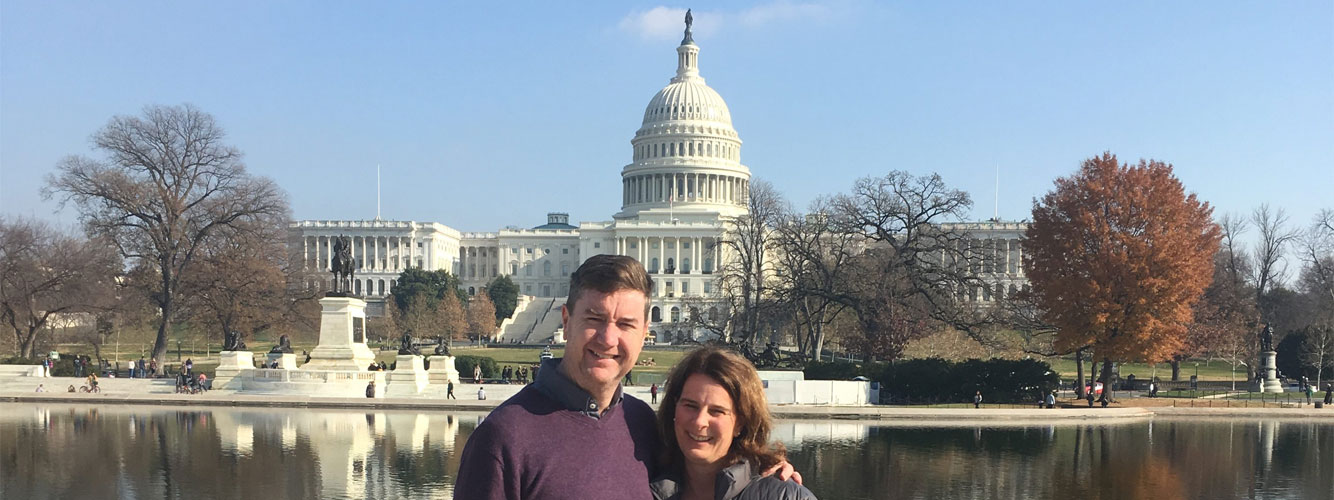
Over the last decade, 400 natural disasters have killed more than 100,000 people and affected a further 120 million annually. The international community provides tens of billions of dollars to assist local communities impacted by these humanitarian emergencies. Increasing the professionalization of leaders and managers of humanitarian disasters is critical to ensure the most effective recovery of communities and countries as well as the most efficient use of resources. I was extremely fortunate to be awarded the 2017/8 Fulbright Professional Scholarship in Non-Profit Leadership in order to better understand how the humanitarian sector works in the US and share the work occurring in Australia at the Centre for Humanitarian Leadership (CHL) – a joint initiative of Deakin university and Save the Children Australia.
My Fulbright program was split over two sites. The first location was Boston, whilst the second location was in Washington DC. Both these locations allowed me the opportunity to work alongside an array of institutions and individuals that have expertise that directly touches upon the work being undertaken at Deakin’s CHL… read more.



 Facebook
Facebook Twitter
Twitter Linkedin
Linkedin Instagram
Instagram